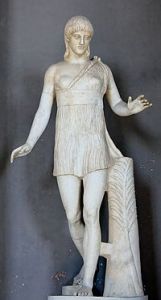
Atalanta, the virgin huntress. A favorite of Apollos twin sister. An 'Arcadian' princess. Use the search box to define a subject. Question. ''younger'' link?
Hence the link to the Kabbalistic saying..."The Breath becomes a 'stone'; the stone a 'plant' {lily?}; the plant, an animal; the 'animal', a man; the man, a spirit; and the spirit a 'god". [Stanza 5. 'The Secret Doctrine'. Mentioned elsewhere]. Think about it, relative to 'stone' symbolism. Together with..."Hence the statement that during the prologue, so to say, of the drama of 'creation', or the beginning of cosmic evolution, the universe or the "son" lies still concealed "in the Divine thought", which had not yet penetrated...'into the divine bosom' {grace link?}. This idea, note well, is at the root, and forms the origin of all the allegories about the 'Sons of god' born of 'immaculate virgins". [page 61, same book]. Think about it, in relation to Zeus/Apollo. 'Immaculate' in relation to an 'understanding' relative to a ''eureka'' moment.[i.e.,in relation to the 'Divine bit']. With A-C in mind. The 'micro' within the 'macro'. Or Alpha - Omega, explained within.
'Intelligence of the heart'? Enlarged elsewhere.
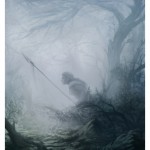
Mirror image?
Side note: {something hinted at with something extra}:"Then outlined in shifting blue, there appeared a series of images - it was difficult to say if they were real or a part of the imagination, but whichever, they were definitely there. First, there was a transparent Image of a man - nothing but an unmoving outline - and then behind him a series of pictures; UN-hewn Stones, crystals, then 'changing' to plants, and to animals, then finally to human form. Again and again this repeated, until it was clear that a life cycle was being shown. Then finally the 'glassy' outline took form - became solid, and assumed the likeness of myself..." [Page 287 . Douglas Monroe book].
Put all those keys together to understand something in relation to S/W.
''San Miniato is a town and comune in the province of Pisa, in the region of Tuscany, Italy. San Miniato sits at an historically strategic location atop three small hills where it dominates the lower Arno valley, between the valleys of Egola and Elsa rivers.''
A {working?} example: "Towards the south of Tuscany, enthroned on her 'three' hills, her quaint old 'towers' soaring into the 'blue' Italian sky - stands Siena....The very name of Siena seems to bring with it a fragrance of lilies." [First page, first paragraph: 'Saint Catherine of Siena' / F. Forbes]. Try ''Catherine''.
And/or: "My beloved is mine and I am his; he pastures his flocks among the lilies." [Song of Songs 2:16].
Try ''Sheep'' and/or ''manger'' As a means....?
Lamb's Tail?
'The Search for the Beloved: Journey's into Mythology and Sacred Psychology' / J. Houston.
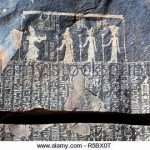
An opening?
And/or: a working example: an ongoing one: ''After the Trojan War, it takes the hero Odysseus ten years to get home, guided by the goddess Athena....With Odysseus, we search for the Beloved, endure setbacks, and finally know the joy of homecoming. We also learn to link our mortal selves with immortal realities, creating an opening through which grace can enter.'' [Back cover 'The Hero and the Goddess' / J. Houston].
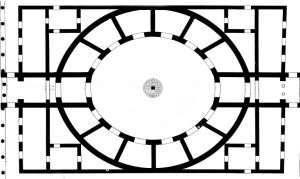
Chester to enlarge.
And/or: The oldest known oral version of the Cinderella story is the ancient Greek story of Rhodopis,[4][6] a Greek courtesan living in the colony of Naucratis in Egypt, whose name means "Rosy-Cheeks". The story is first recorded by the Greek geographer Strabo in his Geographica (book 17, 33): "They [the Egyptians] tell the fabulous story that, when she was bathing, an eagle snatched one of her sandals from her maid and carried it to Memphis; and while the king was administering justice in the open air, the eagle, when it arrived above his head, flung the sandal into his lap; and the king, stirred both by the beautiful shape of the sandal and by the strangeness of the occurrence, sent men in all directions into the country in quest of the woman who wore the sandal; and when she was found in the city of Naucratis, she was brought up to Memphis, and became the wife of the king."
Amarna / slipper/sandal to enlarge.
''The same story is also later reported by the Roman orator Aelian (c. 175–c. 235) in his Miscellaneous History, which was written entirely in Greek. Aelian's story closely resembles the story told by Strabo, but adds that the name of the pharaoh in question was Psammetichus.''

Semi-circle = 'Bowl' =Cup?

The change over from Pyramid to Temple construction. BOTH beginning at Saqqara. Circular bowls - within a square base - filled with water. 'Fire' and 'water' as a means...?
Continued: "When visiting ancient temples that lined the river Nile in Egypt, i noted that tops were shaped depending on their function and location. It was an eye-opener to see so many that one could interpret as being bowl-shaped. I was struck by those that were clearly meant to imply the underside of a plant, while the top edge was fashioned to represent the leaves of a plant. At the temple of Edfu, upstream from Luxor on the banks of the river Nile, there are some wonderful examples that illustrate the bowl shape and leaf patterned tops, and a variety of numbers of petals...We are told that the representation was of a lily. There are several types, not to mention the hybrids that have been commercially derived in the past century or so. I had not realized it until i started my research on this subject, but the standard lily, which may well have grown in the Middle East in the Solomonic era, has a petal configuration very close to the interlocking triangles of Solomon's seal...This would accord with the idea of harmony. But more importantly, the number six has a direct relationship to the lily {i.e.,number of its petals}...Recalling that the wisdom of Solomon extended to an encyclopedic knowledge about plants and trees, it is understandable that he should choose such a flower as an emblem of his national identity, in much the same way that the lotus became a symbol of Egypt..." [From the book by K. Gest]. Try ''vegetable'' / ''vegetative'' etc.
A 'stone' that can also be represented with a 'pearl'.
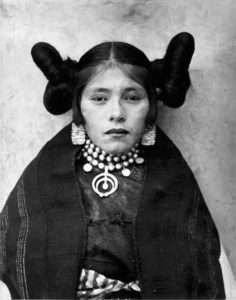
Pearls.

Even though Copper Age funerary practices in Iberia are largely characterized by collective inhumations, burial at Valencina yielded the remains of a single individual interred as a primary inhumation. This burial is remarkable for several reasons. The individual buried in it was first identified as a probable young male between 17 and 25 years of age at the time of death based on standard anthropological analysis. Strontium isotopes showed this individual to be of local origin, while at the same time, strikingly high levels of mercury in the bones revealed intense ante-mortem exposure to cinnabar. This person was accompanied by a lavish set of prestige goods that included a large ceramic plate (in which chemical traces of wine and cannabis were found, a small copper awl and multiple flint and ivory objects (lower level). Remarkably, amongst the latter was a full tusk, weighing 1.8 kg, of an African elephant, which is unparalleled in western Europe. Sometime after this burial, another offering was made to the individual buried in tomb 10.049 (upper level): a set of flat slate slabs were carefully laid above, and further grave goods were then deployed, including several large ceramic plates and many more ivory objects. Among the latter, a beautiful dagger with a blade made of rock crystal and an ivory handle decorated with 90 perforated discoid beads made of mother of pearl stands out.
'The New Pearl of Great Price' by ?
A heart of stone.
"...To meditate [and/or study] is to deepen; it is to go to the heart of things." [Extract from the book by Tomberg. 'Letter 21'. Parenthesis; this readers ].
'The legend of the Rose and the Lily'. ['The Flaming Door'].
Question. 'Rose' = ''bosom'' link? Enlarged elsewhere.
"Ken, crystals are little more than rocks. I began to explain how crystals are actually alive and conscious something that i realize is outside of normal consciousness but not outside of science. I showed him the periodic table of the elements...how carbon, the 6th element, is associated with all organic chemistry and everything that is normally considered to be alive. But directly below it, one octave below, is the element of silicon, the primary element of quartz crystal and 80% of the crust of the earth." ['Serpent of Light' - mentioned elsewhere].

S/W?
A working example?..."Quartz stones placed {only} on a child's tomb." ['Digging for Britain' /Series 1]. The narrator Alice Roberts speculates as to why. King 'Arthur' also speculated on within that same 'frame of reference' {i.e.,further down YET same 'position' - relative to an 'understanding'} OF WHICH - the most important aspect - within that same reference point, i.e., S/W - is not even considered. Enlarged elsewhere. Hence the link to such quotes as...
"We don't know the purpose of the white quartz pebbles. There found in mortuary context from pre-historic periods onward and also medieval cemeteries. There's a passage in the Bible - Revelations- about a person who has found Christ is given a white stone - and in that - a new name." [Same program]. Try ''nickname''.
'White oriental porphyry stone...'' ? As a means....? Enlarged elsewhere. Try Part 2.
And/or: Salt plates {white} found at the feet of the deceased in cemeteries: ''As a sign of purity and eternal life''. ['Digging for Britain' / S9 E2].

The Dog Star.

Vessel/Cauldron? Death/rebirth?
Yet another: Middle Italy {Umbria} a cemetary called ''The Childrens Cemetary'' - 5th centry AD - a 'brick' put deliberately into the mouth of one of the kids. Initially believed it to be of occultish ritual. ''Has a crystalline sheen to it and purposely shaped to fit into the mouth. Other finds include ''Raven talons, toad bones, cauldrons, ash, signs of burning and sacrificed puppies...and honeysuckle. ''Get into a mind set beyond: ''In Italy, in the 5th century Christianity has taken root, and anyone displaying idolatrous beliefs is savagely persecuted. The stone in the mouth may have been a supernatural safeguard....The stone keeps the spirit inside the body, therefore avoiding the issue of the undead.'' ['Ancient Unexplained Files'].
Alice Roberts to enlarge.
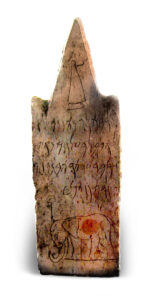
Elephant at the base.

Rectangular?
Side note: "The Tophet of Carthage is a cemetery for infants in the ruins of the North African city of Carthage, now located in a suburb of Tunis. It was once located on the edge of ancient Carthage, which was destroyed by the Romans in 146 BCE. The cemetery is the subject of historical controversy because both ancient texts and archaeological evidence point to the possibility that the children buried in the tophet were child sacrifices. The cemetery was used for over 600 years, between 730 BCE and 146 BCE. Changes in the grave markers and burials indicate three different periods of use.
The Carthage tophet has no adult graves, and many of the grave stelae are marked with dedications to Baal and Tanit, the patron deities of Carthage. The word tophet comes from the Hebrew topheth derived from "drum" or "place of burning," an open area for sacrifice. Numerous tophets have been identified in the eastern Mediterranean region.
Herod to enlarge.
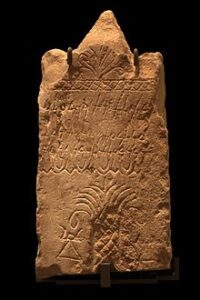

Tomar- Portugal. Found in the 'washing room'.
Sulfur (also spelled sulphur in British English) is a chemical element; it has symbol S and atomic number sixteen. It is abundant, multivalent and nonmetallic. Under normal conditions, sulfur atoms form cyclic octatomic molecules with the chemical formula S8. Elemental sulfur is a bright yellow, crystalline solid at room temperature.
Sulfur is the tenth most abundant element by mass in the universe and the fifth most common on Earth. Though sometimes found in pure, native form, sulfur on Earth usually occurs as sulfide and sulfate minerals. Being abundant in native form, sulfur was known in ancient times, being mentioned for its uses in ancient India, ancient Greece, China, and ancient Egypt. Historically and in literature sulfur is also called brimstone,[7] which means "burning stone".[8]
Fire and water {ice}.
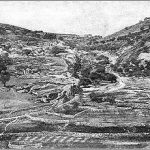
Hinnon.
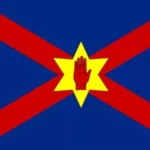
Severed.
The Tophet of Carthage, excavated between 1920 and 1970, shows burials of young infants, interred in small vaults with beads and amulets, and sometimes the bones of small animals. Low thrones or stones marked the early graves.
In later periods, buried a layer above the original graves, sandstone markers were covered with stucco and painted yellow, red, or blue. Narrow, limestone grave stelae with pediments appear, inscribed with representations of Baal and Tanit. Many featured the sign of Tanit shown on the stela in the image—a triangle with a disc at the apex and a line through the apex with upturned ends, which looks perhaps like a child or a doll with outstretched arms."
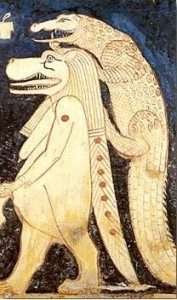
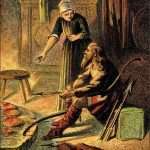 Continued: A working example {within a mind-set}: Osiris! Long have i searched for the severed and scattered pieces of who i AM {'hands?}. I have erected temples of sand that melted in high tides. I have built shrines of stone engulfed by twining vines and adorned with the nests of birds. I brought offerings and sacrifices to altars of gods long forgotten. I wrestled with crocodiles and carried the sword in battle. I gave birth to rosy-cheeked children and baked bread in earth ovens. Let it be enough. Osiris. Bring me home, and i will bathe my feet in your ancient waters and fill the niches of your temple with honeysuckle and wine. ['Invoking the Scribes of Ancient Egypt' / N. Ellis + G. T. Brown].
Continued: A working example {within a mind-set}: Osiris! Long have i searched for the severed and scattered pieces of who i AM {'hands?}. I have erected temples of sand that melted in high tides. I have built shrines of stone engulfed by twining vines and adorned with the nests of birds. I brought offerings and sacrifices to altars of gods long forgotten. I wrestled with crocodiles and carried the sword in battle. I gave birth to rosy-cheeked children and baked bread in earth ovens. Let it be enough. Osiris. Bring me home, and i will bathe my feet in your ancient waters and fill the niches of your temple with honeysuckle and wine. ['Invoking the Scribes of Ancient Egypt' / N. Ellis + G. T. Brown].
REFRESHER: "There is a mosque whose foundation was laid from the first day on piety; it is more worthy of thy standing forth therein." [i.e., in relation to ''The original mosque of piety built by the Muhammad himself]..."Which then is best? - he that layeth his foundation on piety to God and his good pleasure? - or he that layeth his foundation on an undermined sand cliff ready to crumble to pieces?" [Quran 9:108/109].
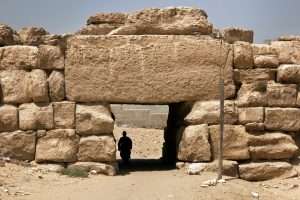
An unbelievable feat of ancient architecture, The Wall of the Crow is 656 feet long, 32 feet high and 32 feet at the base. Standing near the Sphinx, this ancient wall was constructed in the 4th Dynasty of Egypt and the true purpose still remains unknown. 'Stretched' to enlarge.
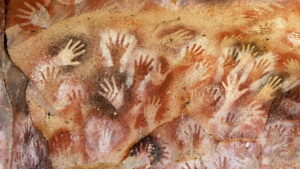
Found in Borneo. Oldest known to date. "Purple around 20,000 years old. The red ones 40,000 years." ['Expedition with Steve Backshall' / S1 EP6]. A 'negative' or positive?
'Wall of the Crow'. {Giza}.
Continued: "And there was under his feet, like the action of the whiteness of a sapphire stone"....The expression - 'the whiteness of the sapphire' - refers to the transparency, NOT to the white colour, for the whiteness of the sapphire is not a white colour - but the property of being transparent {'glass'?}. Things, however, that are transparent have no colour of their own as is proved in Physics, for if they had a colour they would not permit all the colours to pass through them nor would they receive colours; it is only when the 'transparent' object is totally colourless, that it is able to receive successfully all the colours. In THIS respect it {the whiteness of the sapphire} is LIKE the 'materia prima' whose relation to 'God' is mentioned..." ['Guide for the Perplexed'].
".....that is the likeness of the 'glory' of the Lord." Same book. Page 260.
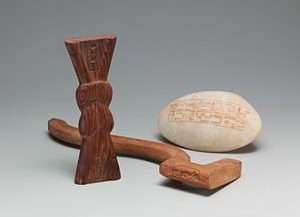
Someone's new name?
"Left – Knot Amulet. Middle – Meskhetyu Instrument. Right – Ovoid Stone.
''On the knot amulet, Hatshepsut's name throne name, Maatkare, and her expanded name with Amun are inscribed. The Meskhetyu Instrument was used during a funerary ritual, Opening of the Mouth, to revive the deceased. On the Ovoid Stone, hieroglyphics was inscribed on it. The hieroglyphics translate to "The Good Goddess, Maatkare, she made [it] as her monument for her father, Amun-Re, at the stretching of the cord over Djeser-djeseru-Amun, which she did while alive." The stone may have been used as a hammering stone.'' ['Wiki'/Hatshepsut].
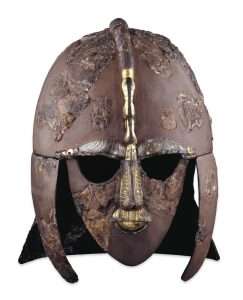
Winged dragon? 'Heavy brow' or light one? Sweat of the brow....as a means....
In the abstract sense of the word: ''For i am the watery venomous serpent who lies buried at the earths center; i am the fiery dragon who flies through the air. I am the one thing necessary for the whole Opus. I am the spirit of the metals, the fire which does not burn, the water which does not wet the hands. If you find a way to slay me you will find the philosophical mercury of the wise - even the White Stone beloved of the philosophers {'crystal clear'?}. If you find a way to raise me up again {'upright'?}, you will find the philosophical sulphur, that is, the Red Stone and elixir of Life...'' [Page 3, 'Mercurius' / P. Harpur].
Moutains Low. Valleys High.
A working example: Whilst this battle royal proceeds, every care must be taken to prevent consciousness from flying off at a tangent, an escape, a defensive operation of the self-preservation mechanism. The hysterical escape from one opposite to another, from the sea beneath into the “regions above”, must be checked, the pain and torture of the conflict being accepted and endured. Then, says the text, the hysterical symptoms of escape pass away and disappear, and the flying volatile will truly forbear to fly. Patiently will it endure the appalling unsettling of itself, the threatened disintegration of its own being, with the quiet stoicism of a sage. And it does so primarily because of its full acceptance of itself and of the conflict raging within.....
Lapwing?

Flaccid libido?
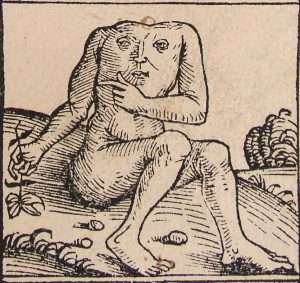
Remedy? "Perhaps we may start by admitting that we are wounded {naked?}. ‘The metaphysician (is a) wounded man. A wounded man is not an agnostic — he just has different questions arising out of his wound. Like the shaman, the wounded healer is one who knows that the true cause of pain is loss of Inner reality — the Inner Kingdom. This realization fired the Gnostics to go upon their own voyage of discovery, just as it later inspired those who went on quest for the Grail and the healing of the Waste Land. Truly, there are many ways of achieving the Great Work." {Page 253 'The Western Way'}.
The disintegration accomplished, it is the freed mind united to its anima, forming a complete and reintegrated psyche, which is the key of the restoration. A new heaven and a new earth. No wonder Hermes apostrophizes the virtue of this healing water! The regenerate soul does have the power to heal and to save - a mind cleansed by analysis, aware of its own true essence, made strong by the union with its anima, and filled with the influx of the awakened vital spirit, the libido. Here are the keys of Wisdom. ['The Philosophers Stone'].
Karnac - Gebel el Silsilia.
And/or: What came to be known as 'Salt plates' {white} found at the feet of the deceased in cemeteries: ''As a sign of purity and eternal life''. ['Digging for Britain' / S9 E2].
'Spirit-fire' ? Gebel-el-Silsila?
From a different perspective: ''Already in the Old Kingdom, a pyramid text proclaims that the 'sky speaks and the earth trembles' when the 'living uraeus of Re' feeds the risen king. Still earlier, her rearing cobra head adorns the brow of two women figures, each standing beside the Horus name of the king on a 2nd Dynasty seal. Although images of the female cobra occur in many different contexts, identified by a bewildering variety of names, this book focuses on one in particular - Hathor. She is so identified with the serpent energy, that it is impossible to understand the core of Egyptian religion without going more deeply into her nature.'' [Page 8 'Hathor Rising' / Alison Roberts].
'Living Water'?
Side note: ''High brow describes something intellectual and 'low brow' = non-intellectual.'' ['The Chase' / S15 EP25].

The Olmec heads. Many painted red. Originated at the Red Palace. Found buried. Some with grim expressions others with JOYOUS ones.....as a means.....? ['Raiders of the Lost Past: The Olmec Heads' / BBC4].
Something manifested?
Red Sarcophagi?

Erect or oblique? Take a closer look. The 'small' chap that is. Coincidence or a meaningful one? Ishon to enlarge.
A beginning of something? If so, then those pyramids from the Step pyramid up to and including those on the Giza plateau - cannot be their final resting place.
A working example: ''Southeast Mexico - at the Maya temple complex at Palenque {FLAT-Place-River} - cracks found in the stairs at Temple XIII {'Thirteen'} which lead to the discovery of ''two empty chambers flanking a sealed door'' within the ''bowels of the building''. The door is TRIANGULAR IN SHAPE {flat top?}. Inside two skeletons with very large sarcophagus - made from a single piece of limestone, covered with heavy flagstone. ''Mysterious skeleton remains found within - in red powder''. Jade beads and Melachite around the skull. Never seen before. Cinnabar {mercuric oxide} with a female skeleton. Queen to the legendary King Pakal the Great. Which is the only other sarcophagus {with lid} to be found {within the Temple of Inscriptions NEXT to Temple '13'}. 'Queen' wearing ornate funerary MASK made from limestone/melachite/obsidian with very abstract EARS. Inscriptions on HIS sarcophagus states the importance of 'three' women in his life: His mother/wife and 'the only true queen of Palenque'. Researchers want to know who the 'third' person is. The ''Red Queen'' turns out to have oblique skull modification as opposed to the 'common' erect one {i.e., 'artifical cranium deformation'}. Skull purposely flatened at the front and back. For the elite only. Kingship in mind. Turns out 'she' is an outsider {'foreigner'}....His WIFE being the only outsider therefore SHE is the Red Queen. Given the regal title of ''true queen'' after death {Beloved'?}.'' ['Ancient Unexplained Files: Tomb of the Red Queen' / Disc-science / 10.9.21].

'Five' ?
Kiya / Tiye to enlarge.

Key to the door?
And/or: ''For 400 years, a group of Indigenous people living in Japan deliberately deformed the skulls of their infant children, a new study suggests. The Hirota people resided on the southern Japanese island of Tanegashima between the end of the Yayoi period and the Kofun period, or between the third and seventh centuries. Between 1957 and 1959, and later between 2005 and 2006, researchers excavated numerous skeletons from a Hirota site on Tanegashima and found that most had deformed skulls.
N.B. From 'fired' pottery to skulls to earthen 'key' mounds. In stages? Evolution? {in the spiritual SENSE of the word}.
The Yayoi period (弥生時代, Yayoi jidai) started in the late Neolithic period in Japan, continued through the Bronze Age, and towards its end crossed into the Iron Age....
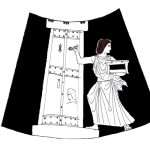 The period is named after the neighbourhood of Tokyo where archaeologists first uncovered artifacts and features from that era in the late 19th century. Distinguishing characteristics of the Yayoi period include the appearance of new Yayoi pottery styles, improved carpentry and architecture, and the start of an intensive rice agriculture in paddy fields.[4] A hierarchical social class structure dates from this period and has its origin in China. Techniques in metallurgy based on the use of bronze and iron were also introduced from China via Korea to Japan in this period. Distinguishing characteristics of the Yayoi period include the appearance of new pottery styles that distinguishes it from the earlier Jōmon pottery.... A point of difference is evident in the way Yayoi pottery is technically superior but artistically less advanced due to the way Jōmon pottery featured greater freedom of design and more variety of shape.[3][4][5] It was followed by the Haji pottery of the Kofun period.
The period is named after the neighbourhood of Tokyo where archaeologists first uncovered artifacts and features from that era in the late 19th century. Distinguishing characteristics of the Yayoi period include the appearance of new Yayoi pottery styles, improved carpentry and architecture, and the start of an intensive rice agriculture in paddy fields.[4] A hierarchical social class structure dates from this period and has its origin in China. Techniques in metallurgy based on the use of bronze and iron were also introduced from China via Korea to Japan in this period. Distinguishing characteristics of the Yayoi period include the appearance of new pottery styles that distinguishes it from the earlier Jōmon pottery.... A point of difference is evident in the way Yayoi pottery is technically superior but artistically less advanced due to the way Jōmon pottery featured greater freedom of design and more variety of shape.[3][4][5] It was followed by the Haji pottery of the Kofun period.
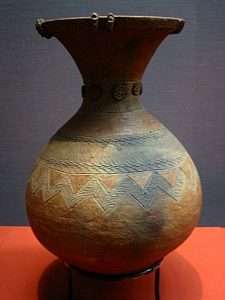
Yayoi pottery was simply decorated and produced, using the same coiling technique previously used in Jōmon pottery. Yayoi craft specialists made bronze ceremonial bells (dōtaku), mirrors, and weapons. By the 1st century AD, Yayoi people began using iron agricultural tools and weapons. Question. 'Tessellated'?
Continued: Until now, it was unclear if the skulls had been deformed by an unknown natural process or deliberately misshaped via a process known as artificial cranial deformation (ACD), which normally involves wrapping or pressing an infant's skull to change its shape shortly after birth. (ACD is also known as intentional skull deformation; however, this term is used less often, as most individuals do not make this decision themselves).
 Side note: "If you’ve ever been to an elite hotel, you might notice your concierge wearing a pin on their lapel: two crossed golden keys. If they were, they were part of a society called Les Clefs d’Or....Founded in 1929 in Paris, the association was organized so concierges could work together for their clients. Though it’s gone through various reorganizations since then, it remains a strong professional association with a notable symbol: that lapel pin you see on many hotel concierges’ coats. It wasn’t until 1953, however, that the society adopted the Golden Keys for their badge. In 1998, Swiss jeweler Bucherer created the official version you see on lapels. You can read a much more comprehensive history on their site....National chapters are under an international umbrella with about 3,800 members total. The group vows to “accommodate every guest request so long as it is morally, legally, and humanly possible.”
Side note: "If you’ve ever been to an elite hotel, you might notice your concierge wearing a pin on their lapel: two crossed golden keys. If they were, they were part of a society called Les Clefs d’Or....Founded in 1929 in Paris, the association was organized so concierges could work together for their clients. Though it’s gone through various reorganizations since then, it remains a strong professional association with a notable symbol: that lapel pin you see on many hotel concierges’ coats. It wasn’t until 1953, however, that the society adopted the Golden Keys for their badge. In 1998, Swiss jeweler Bucherer created the official version you see on lapels. You can read a much more comprehensive history on their site....National chapters are under an international umbrella with about 3,800 members total. The group vows to “accommodate every guest request so long as it is morally, legally, and humanly possible.”
So, what does it take to get the golden keys? In the USA, members of the American chapter have to be twentyone, have to have worked five years in a hotel, and worked at least three as a concierge before they can apply."
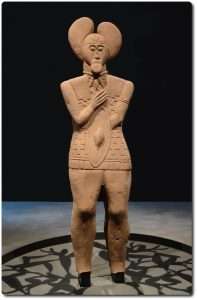
From a different perspective? Feet purposely not made?

'Flat' top?
Continued: "It's unknown why the Hirota people chose to alter their infants' skulls. One possibility is that it helped them distinguish themselves from other groups, the researchers wrote in the statement. The team plans to examine more archaic deformed skulls from the region to gain further insight into why ACD was carried out.
Evidence of ACD has been uncovered in many groups throughout history, including the Huns, medieval European women, the Maya, some Native American tribes, and people from the ancient Paracas culture in what is now Peru, whose exceptionally elongated skulls have been misconstrued by conspiracy theorists as evidence of aliens, Discover magazine reported in a 2022 feature on ACD.

"The stola (Classical Latin: [ˈst̪ɔ.ɫ̪a]) (pl. stolae) was the traditional garment of Roman women, corresponding to the toga that was worn by men.[1] It was also called vestis longa in Latin literary sources,[2] pointing to its length.[3]" Emphasis on right 'breast' and 'knees'? "Hands"?
And/or: Whorl/Bean ears as alternative REPRESENTATIONS from other CULTURES. Enlarged elsewhere.
Sais in the Nile Delta? {i.e., ear tablets}.
Question. Common ''erect'' one = 'Corn Ear'?
The name of the Greek goddess Doris is connected with two words: Dôron meaning "gift" or "abundance," and Zôros, meaning the "pure" and "unmixed." Zôros was often used to describe fresh water or, in terms of the teachings of the day, the pure soul of a woman, and from this derived words such as zôrua "the transference of running water" and zôrux "water conduit."[citation needed]
'Living water'?

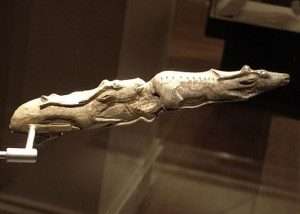
Female in front. Male behind.
''About my hermetic egg - for better or worse i have chosen the double pelican. It should be a vas mirabile {wonderful vessel}. If it cannot be completely round like the world, then it should be oval, like a hen's egg, so that Mercurius may move around it as his namesake describes an oval orbit around the 'sun'. If it is not ovoid, then it should be shaped like a uterus for the gestation of the noble son of Sol and Luna, the princely lapis {stone}....'' [Page 38 'Mercurius' / P. Harpur].
Djedefre?
Ear of corn?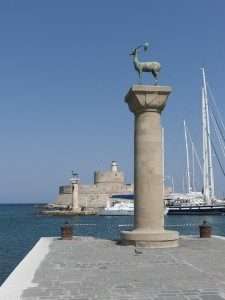

''This vessel is the true philosophical Pelican, and there none other to be sought for....''
Golden Hind was a galleon captained by Francis Drake in his circumnavigation of the world between 1577 and 1580. She was originally known as Pelican, but Drake renamed her mid-voyage in 1578, in honour of his patron, Sir Christopher Hatton, whose crest was a golden hind (a female red deer). Hatton was one of the principal sponsors of Drake's world voyage. A full-sized, seaworthy reconstruction is in London, on the south bank of the Thames.... The design of the Golden Hind was based on the Spanish built nao Victoria,[4] the first ship to circumnavigate the world, and is described as a "mid-16th-century warship during the transition from the carrack to the galleon," and measured about 120 tons.[5] He first named his flagship Pelican, but renamed her Golden Hind on 20 August 1578[6] to honour his patron, Sir Christopher Hatton, whose family crest was a golden hind. He set sail in December 1577 with five small ships with a complement of 164 and reached the Brazilian coast in early 1578.[7]
'120'.
''Twenty''?

'Birthing' bricks.
A working example: ''From 1985 to 1989 Michael Hoffman undertook excavations at a locality called HK29A in the central part of the so-called ‘Predynastic town’ in the low desert at Hierakonpolis. His work revealed the eastern half of a large architectural complex arranged around a 13 m wide, over 32 m long, oval floor that had been paved several times with mud-plaster, providing evidence for major phases of usage in Naqada IIB-C (c. 3500 bc) and Naqada IID-Naqada IIIA (c. 3300 bc), with more sporadic activity continuing into the First Dynasty. The evidence available at that time indicated that in the early phase, the courtyard was surrounded by a fence of wooden posts that was subsequently augmented or replaced by mud-brick walls.

Ducks?
The limited clearance to the south of the court revealed an earlier alignment of medium-sized postholes, which were later replaced by four larger pits, up to 1.6 m deep, at the bottom of which the decayed stumps of the original wooden posts were found.... Nearly 43,000 sherds (5,976 rims; 1,274 bases) were recovered from the area of the wall trench and modified silts in the 1980s, to which can be added roughly 25,000 sherds (4,387 rims; 602 bases) from the 2002 excavations. Despite the large size of the ceramic sample, the range of shapes was limited to a small number of specific forms. The most distinctive shape is a unique jar with a ‘collared’ rim, made of fine Nile silt fabric, which was coated with a red, micaeous slip that was never polished, giving it a matte appearance. The second most frequent vessel is a small egg-shaped jar with a highly polished all black slip.The collared jar is entirely without parallel outside of Hierakonpolis, and the black ‘egg’ jars, while present in the Predynastic mortuary corpus, are relatively rare. ''
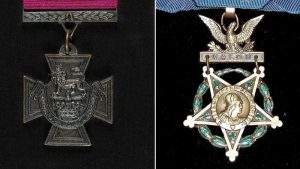
Starfish?
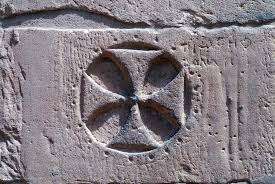
Found at Philae/Egypt. How many dots?
Side note: ''For more than a decade, archaeologists have struggled to decipher an inscription carved into the neck of a broken jar that dates back to King Solomon's reign in ancient Israel. Now, researchers have finally revealed the mysterious message's meaning. Based on the new interpretation, published in January in the Jerusalem Journal of Archaeology, the inscription was engraved using Ancient South Arabian script in Sabaean, a common language that was spoken during biblical times on the Arabian Peninsula in the kingdom of Sheba, in what is today Yemen. The text on the jar reads "ladanum 5," a reference to labdanum (Cistus ladanifer), an aromatic, plant-derived resin that was used to make incense, according to a Hebrew University of Jerusalem statement. The inscription is thought to be the oldest known Ancient South Arabian script found in Israel, according to the study.''
''Five'' to enlarge.
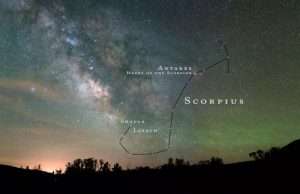
Continued: ''Aside from a few fragments of stone vessels and discoid maceheads, objects securely attributable to this phase include one half of an ivory object carved in the shape of a bivalve shell and a fragment of a stone figurine previously identified as the head of a falcon. Comparison of this piece with recent finds from Tombs 23 and 26 at HK6 indicate that it is actually the tail (with stinger) of a scorpion statuette; the three examples from HK6 reveal their highly stylized but unmistakable identity. Together these statuettes appear to stand at the beginning of the special relationship that Hierakonpolis has with the scorpion, as is exemplified by the large number of scorpion figurines found in the Main Deposit, the significance of which remains a matter of discussion.''
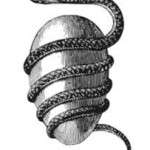
Inner/outer. A beginning or end?
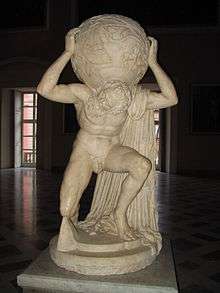
What would the remedy be for such a weight ''upon ones shoulders''?
And/or: ''Recent investigations in the elite Predynastic cemetery HK6 at Hierakonpolis have revealed two separate precincts, one containing a series of above-ground multi- columned structures (pillared halls) and the other, an interconnecting complex of enclosures surrounding the tombs of humans and animals. The excavations in both areas have yielded a variety of fine artefacts as well as substantial quantities of ostrich eggshell fragments, which were found in several more or less discrete clusters. Of interest is the number of eggs in each cluster. While refitting the egg pieces would be a formidable if not impossible task, a method was developed that provides a good estimate of the minimum number of eggs present by determining the total area of a given group of egg fragments and then dividing this by the surface area of a whole egg. Although an exact formula for calculating the surface area of an ovoid (egg shape) is not known, it can be closely approximated by one-half the sum of the surface areas of two ellipsoids of the same maximum diameter but of different lengths. A formula for the surface area of an ellipsoid is known. Thus, a standard surface area for Predynastic Upper Egyptian eggs of 581 cm2 was derived using data from ancient eggs held in various museums. Using this approach, it has been determined that a mini-
mum of twentytwo whole eggs were present in the recently excavated areas at HK6. This is considerably more than has been found at any other Predynastic Egyptian site. Based on the Hierakonpolis data, the significance of ostrich eggs in burial and ritual contexts in Predynastic Upper Egypt is discussed.''

The tail end of the ''stinger'' = two swimming ducks.
Continued: ''OUT FOR A DUCK'': That's because it means that they've been bowled out, or dismissed, before getting any runs whatsoever. The origin of this phrase is simpler than you might think. A duck's egg is an oval, which is also the shape of the number 0. So, lo and behold, we get the phrase 'out for a duck'.
''A typical Cricket game has 11 players in each team. It is fundamentally very similar to baseball. It is played with a bat and a ball. The center of the field is a rectangular area of 22 meters called a pitch.''
22 Two little ducks The numeral twentytwo resembles the profile of two ducks. Response is often "quack, quack, quack".

90 V 180?
And/or: ''The Oval Office is the formal working space of the President of the United States. Part of the Executive Office of the President of the United States, it is located in the West Wing of the White House, in Washington, D.C....The oval-shaped room features three large south-facing windows behind the president's desk and a fireplace at the north end. It has two built-in bookcases, and four doors: the east door opens to the Rose Garden; the west door leads to a private study and dining room; the northwest door opens onto the main corridor of the West Wing; and the northeast door opens to the office of the president's secretary.''

Which is N/E?
Side note: ''An Apocryphal Gospel said to have been used by the Gnostics in the 2nd century - elaborates of the birth of Jesus in a cave outside Bethlehem: 'And it came to pass...in the time of Herod the King; the wise men came from the East to Jerusalem; according to the prophesy of Zoroaster, and brought with them offerings; namely gold, frankincense, and myrrh, and worshipped him, and offered to him their gifts. Then the Lady Mary took one of his swaddling clothes in which the infant was wrapped, and gave it to them instead of a blessing, which they received from her as a most noble present. On their return the kings and princes came to them inquiring. What they had seen and done? What sort of journey and return they had? What company they had on the road?....It goes on to talk about a feast and/or: ''they made a fire and worshipped it. Cast the swaddling cloth into it. It made no impression on it.'' [Page 18 'Magi: The Quest for a Secret Tradition' / A. Gilbert].
Mary's Shift?
''The Shepherds' Field Chapel (Arabic: كنيسة حقل الرعاة; Hebrew: כנסיית שדה הרועים)[citation needed] or the Sanctuary of the Gloria in excelsis Deo,[1] dedicated to Our Lady of Fatima and St. Theresa of Lisieux,[2] is a Roman Catholic religious building in the area of Beit Sahour, southeast of Bethlehem in the West Bank in Palestine.[3][4] The chapel marks the place where, according to Catholic tradition,[dubious ] angels first announced the birth of Christ.''
Higher/lower?
A working example: ''Theres a place close by, a cave, where the shepherds would keep newly born lambs wrapped in swaddling cloth - so they would'nt become blemished.'' ['Bethlehem and the Manger' / Magdala / Israel].
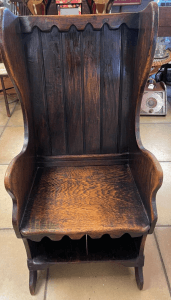
These chairs were generally believed to be used by farmers whilst waiting in draughty barns for sheep to lamb, and also to keep sickly lambs under the seat to keep them warm.

“Most certainly, I tell you, one who doesn’t enter by the door into the sheep fold, but climbs up some other way, is a thief and a robber."
''Isaiah 40:11. He shall feed his flock like a shepherd: he shall gather the lambs with his arm, and carry [them] in his bosom, [and] shall gently lead those that are with young.''
And/or: ''The shepherds’ fields outside Bethlehem, to this day, play a central role in the Christmas celebrations in the Holy Land. Countless tourists have visited the fields between Bethlehem and Jerusalem. The church historian Eusebius linked these fields to a unique biblical location called Migdal Eder, which translated means the “tower of the flock”.....
The first time Migdal Eder is mentioned in the Bible is in the account of Rachel, who died after giving birth to Benjamin, the youngest son of Jacob. “Then Israel journeyed and pitched his tent beyond the tower of Eder”, records Genesis 35:21.
This area on the outskirts of Bethlehem is also mentioned in the Talmudic writings. According to the Talmud, all cattle found in the area surrounding Jerusalem “as far as Migdal Eder” were deemed to be holy and consecrated and could only be used for sacrifices in the Temple, in particular for the peace and Passover sacrifices. There was thus a special, consecrated circle around the city of Jerusalem.
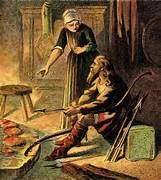 And/or: "The Old Religion and its current adherents are all seekers after joy. It is a religion of personal experience and of ceremonies that bring companionship and happiness to the people who share them....
And/or: "The Old Religion and its current adherents are all seekers after joy. It is a religion of personal experience and of ceremonies that bring companionship and happiness to the people who share them....
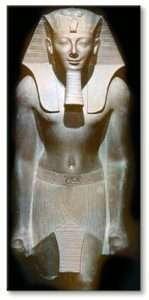
sad?
They do not see the CAKES AND WINE of their communion as the blood and body of a slain god, but as tokens of the harvest from the Earth Mother and her Lord. There should be no idea of 'sacrifice' {altar link} - for the corn is grown to be harvested." [Page 67 'Magic for the Aquarian Age' / M. Green].
"Untouched by fire."
Burnt cakes?
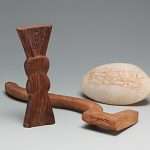
Someones new name.
Continued: A working example: ''This land i hold is the place where the Pelican Dreaming meets the Brown Snake Dreaming. It is the most sacred land, for it holds another world within it. It holds the Dreaming {'images/hieroglyphs' etc}. It holds the ancestors. It holds the future......The open PLAIN landscape is where the Dreamtime lives {'archetypes'}... It includes a mythological distant past when the CREATIVE spirits moved over the land, shaping it, NAMING it, calling it into BEING....Those creative SPIRITS known as Pelican and King Brown Snake are said to have met {'crossroads'?}..... so that it seems that the mythic time beyond time is overwhelming our little local time.'' [Page 12/13 'A Mythic Life' / J. Houston].
 ''The Lover and the Serpent'' / Llewellyn Vaughan-Lee.
''The Lover and the Serpent'' / Llewellyn Vaughan-Lee.
Question. Pelicans and snakes = egg layers?
Mountains low, Valleys high?
A working example: ''Baby Pelicans piercing into their own Mothers breast/Heart...a sign that points to a deeper reality {in relation to the Upper Room of the Last Supper and/or the Washing of Feet i.e., lower room}. ['Pilgrimage of Grace' / Magdala /March 2022].
Recall the Egyptian Vulture goddess {Mut}
From a different perspective: ''In the Romance, only the carrion-eating Sow of Maenawr Penardd is independent of the male magicians rod. She is Cerridwen, the White Sow Goddess, in disguise. It will be seen that Arianrhod the Birth goddess, and Arianrhod the goddess of Initiation who gives a name and arms to Llew {and sandals}; and Blodeuwedd {his wife}, the Love goddess; and Blodeuwedd the Owl goddess of Wisdom; and Cerridwen, the Old Sow of Maenawr Penardd - form a PENTAD. They are the same goddess in her five seasonal aspects....'' [Page 306/315/322 'The White Goddess' / R. Graves].
N.B. ''Male and female Polar bears are known as Boars and Sows.'' ['The Chase'].
Question. The Egyptian 'Ka' neter? Raised arms?
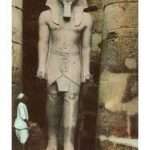
Best foot forward? Any foot wear?
'Sandals' in relation to footwear. Bulls foot in relation to a normal one. Bull headed in relation to bull footed {'heel' link}. To be on ones toes rather than digging IN with ones heels. Llew Llaw who happens to be another shoemaker {and a ''very good horseman''}. The author R. Graves sums it all up as ''foot fetish'' as he does with the countless footprints found throughout.
''Is it possible that foot-fetishism was an ancient cult in Ardudwy, the scene of the 'Romance', though i do not know whether the evidence has ever been officially recorded.'' [Page 314 'The New Edition' edited by Grevel Lindop].

Amun = ''hidden''. 64 objective aspects. Positive/Negative.
Get into that mind set to 'see' what has always been hidden ''in plain sight''.
3:1 to enlarge i.e., under ''sandal''.
Stotting - as a means....?
Heavy footed / Light footed?
Refresher: ''Socrates who was born to spite shoemakers''.
Plato?
Analogy: ''Its a story at the end of the day - an archetypal story - and that's what's really important - and not the in's and out's of it." ['Forbidden History: In Search of the Real King Arthur' / Narrated by J. Theakston]. Enlarged elsewhere. Try Part 1.
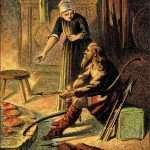
Any truth in the tale?
And/or: Alice Roberts within the program 'King Arthurs Britain: the Truth Unearthed' asks such questions as ''Any truth in the tale?'' and/or "The stories of King Arthurs Britain have filled the gap in our Dark Age History. No physical evidence ever been found. New discoveries now being made that will separate fact from fiction." Her conclusion ''He doesn't exist. He embodies the idea of kingship but is not a real historical figure."
As with: "For archaeologists burial sites can offer precious clues about how our ancestors lived and died. But sometimes they can surprise us with insights into what seem strange beliefs and rituals long since forgotten." [Alice Roberts quote, 'Digging for Britain'].
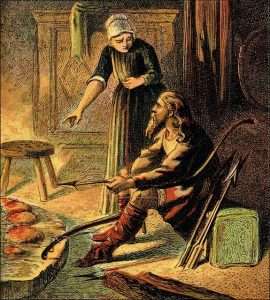
'Half baked'? What do ''ashes'' represent?
Understand those universal {concepts?} to define those ''strange beliefs and rituals long since forgotten."
Crystallize / UNcrystallize? Among others try ''child'' and ''stone'' and especially ''Alfred''.
''In the Dark Ages NOTHING was written down''. Understand subject material to 'see' what NEED NOT be written.
Refresher..."Got to see it, rather than just read it..." John Humphrys talking to D. Tennant and Greg Doran in relation to the plays by W. Shakespeare. [400th anniversary. Radio 4. 23/04/16].
Practical example: ''Say what you see'' {'Catchphrase' / ITV}.
Burnt scones in relation to funerary cakes = Hints of a possible location.
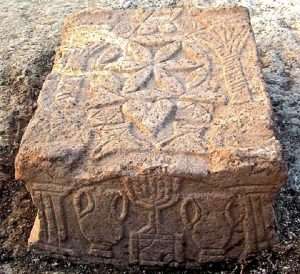
The Magdala stone. Convex or concave as a means....?
And/or {i.e., from the 'Alchemical' perspective}: The idea of making artificial gems has been around since before Zosimos, but the original process required melting glass, which involves a much hotter fire...However Della Porta, one of our previous personalities, was kind enough to share a recipe that Zieglerin may have been aware of. She touted her 'philosophers stone' as able to make ''diamonds, rubies, and sapphires''...In this procedure, we will use what the alchemists called ''oil of flints'' but which we call sodium silicate solution, or water glass. This material was and still is, made by dissolving silica - the fundamental material of sand, rocks, and flint, in a caustic solution and is a favorite with crystal-garden growers. Fashion a mould for your gem that has a volume of about a tablespoon {i.e.,15 milliliters} from...['The Chemistry of Alchemy'].
Side note: An artificial swamp? {Oak Island}.
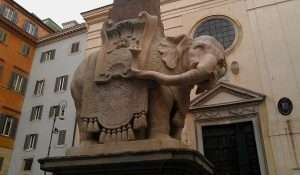
Eyes, ears and nose. In profile or face on?
Working example: ''After this act a vast 'artificial elephant' was brought forth. 'HE' carried a great tower with musicians, which was pleasing to all.'' {Page 47 {Kindle}: Forth Day: 'Chemical Wedding of Christian Rosenkreutz'].
Question. What do 'gems' / 'flint' / and especially ''water glass'' in relation to 'Isle of glass' represent? ALL as a means to define something other than the obvious. Inner rather than outer.
'Natural' elements used to define that inner process {i.e., as ONE example, what are porphyry stones composed of}?
Side note: ''Tablespoon'' in relation to ''15''. Coincidence or a meaningful one?
 And/or: "Interestingly the translator explains, in a footnote drawn from various ancient learned commentaries on the text, that the human inhabitants of the Vara {'Zoroastrian religion'}: 'live there for 150 years; some say they never die'. Moreover, and particular intriguing, the births of offspring to every couple do not result from sexual union but 'from the seeds deposited in the Vara'..." ['Magicians of the Gods'].
And/or: "Interestingly the translator explains, in a footnote drawn from various ancient learned commentaries on the text, that the human inhabitants of the Vara {'Zoroastrian religion'}: 'live there for 150 years; some say they never die'. Moreover, and particular intriguing, the births of offspring to every couple do not result from sexual union but 'from the seeds deposited in the Vara'..." ['Magicians of the Gods'].
Queendom?
Try ''seed'' and/or ''pearl'' in relation to ''fifteen'' to 'see' what the author cannot. Although his synchronistic remarks throughout the book - inform, if only this reader - that he is very close to his own 'awakening'. Try ''Tutankhamun'' for something further.
As is: ''A further complication was that anciently a large part of poetic education, to judge from the Irish Book of Ballymote, which contains a manual of cryptography, was concerned with making the language as difficult as possible in order to keep the secret close; in the first 'three' years of his educational course, the Irish student for the Ollaveship had to master one hundred and fifty cypher-alphabets.'' [Page 97 'The White Goddess' / R. Graves].
Side note: Karnac also has '15' aspects {i.e., but now in the singular sense of the word}. Coincidence?
REFRESHER; "Clement of Alexandria elucidates the idea that Jesus is the 'son of god' by explaining: 'The Son is the consciousness of the Father.' The 'Father' is the Mystery...the dazzling darkness of UNconscious Consciousness."
Aten disc to enlarge.
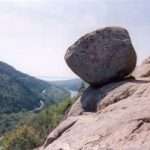
Jung to enlarge.
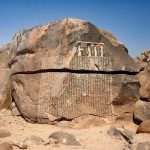 "A monk who had meditated long in search of Illumination finally received a great flash of insight. Rushing to his 'roshi' {Zen master}, the monk cried out, 'I have it! I have it! That rock there is inside my head.' "You must have a big head," the master replied, ''to hold a rock that size." [Extract from the book 'The Cosmic Trigger'. Mentioned elsewhere].
"A monk who had meditated long in search of Illumination finally received a great flash of insight. Rushing to his 'roshi' {Zen master}, the monk cried out, 'I have it! I have it! That rock there is inside my head.' "You must have a big head," the master replied, ''to hold a rock that size." [Extract from the book 'The Cosmic Trigger'. Mentioned elsewhere].
Refresher...'You cant have one without the other - but one has to come before the other'.
""In Latin a pearl was 'unio', because as Pliny writes, it is 'the unique gem', or because pearls are only found singly...Oysters open and shut, like doors [folding doors in English were once called 'bivalves'], and the open shell of an oyster looks like the number 8." [Quote from the Lexicon chapter to the book ' The Book of Babel: Words and the Way We See Things' by N. Lewis].
Oyster in relation to the 'legend' of Oak Island. Anything?

Made from what an ISLAND is 'created' from.
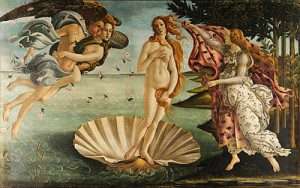 Randell Sullivan defines Oak Island as ''A search for meaning''. Rick Lagina - ''An island of possibilities.'' ['Curse of Oak Island'/ Series 4. Ep.5].
Randell Sullivan defines Oak Island as ''A search for meaning''. Rick Lagina - ''An island of possibilities.'' ['Curse of Oak Island'/ Series 4. Ep.5].
'Mans Search for Meaning' / Viktor Frankl.
The 30th Anniversary is known as the Pearl Anniversary because, historically, wives celebrating their 30th Anniversary were presented with pearls.
Sed Festival? {and/or 'feast of the tail'}.
"The Bibliotheca is the only one who gives an account of Atalanta's birth and upbringing. The Bibliotheca is a compendium of myths and heroic legends arranged in three books. It has been called ''the most valuable mythological work that has come down from ancient times." An epigram recorded by Photius expressed its purpose: 'Draw your knowledge of the past from me, and read the ancient tales of learned lore. Look neither at the page of Homer, nor of elegy, nor tragic muse, nor epic strain. Seek not the vaunted verse of the cycle; but look in me, and you will find in me, all that the world contains." [Wikipedia].
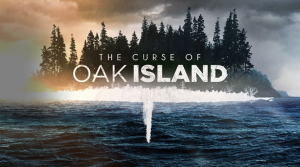
The ship that brought them all = Atalanta. Coincidence?
"...Or to the source of the golden apples of the Hesperides that were the key to the possession of the pure maiden 'huntress' Atalanta. It is therefore not unfitting that at this point the author of the 'Divine Comedy' pauses to invoke the virgin Muses, on their heights on Mount Helicon, and in particular the Muse Urania. It is she who inspires knowledge of astronomy and heavenly things. The most 'divine' secrets of Love are, in short, held within 'the starry wisdom' ''. [From the book by G. Knight. All emphasis, this readers].
'Apple of the eye' in relation to the beginning {'virgin'} - of something.
 REFRESHER: "A certain aspect of the Old Mystery wisdom which continued on into early Christian times was known as Gnosis. The Christian Gnostic scriptures which have come down to us in the 'Pistis Sophia' tell of the descent or fall of the original ''Virgin'' wisdom into darkness, and its salvation by Christ {'bosom' link}. It is called Sophia, the virgin of light. There are passages which refer to the power of the 'virgin of light' to redeem mankind from ..."['The Flaming Door'].
REFRESHER: "A certain aspect of the Old Mystery wisdom which continued on into early Christian times was known as Gnosis. The Christian Gnostic scriptures which have come down to us in the 'Pistis Sophia' tell of the descent or fall of the original ''Virgin'' wisdom into darkness, and its salvation by Christ {'bosom' link}. It is called Sophia, the virgin of light. There are passages which refer to the power of the 'virgin of light' to redeem mankind from ..."['The Flaming Door'].
Grace?
"All the legendary accretions of later years and centuries about his early life and his pre-baptismal days should be taken with a grain of salt. It is no part of my purpose either to affirm or to deny the doctrine of the Virgin Birth: only to state that in those first days there was no question of belief in either his or his mother's immaculate conception: no reason to think that his followers or his family ever believed that his birth was in any way supernatural." ['A Man Seen Afar' / W. T. P].
"For the law was given through Moses; grace and truth came through Jesus Christ. No one at any time has seen God. The only begotten son, who is in the ''bosom of the father,'' he has revealed him." [John 1:18-19]. That word 'bosom' again.
Moses in Egyptian = ''Son of.'' Question. Why did he not 'crossover' into the promised land? What does it represent? Answer found in Surah eighteen. Enlarged elsewhere.
Try 'Great Turning at hand'?
Nothing more than a story? A figment for the imagination? Something equivalent to the Forsyte Saga?
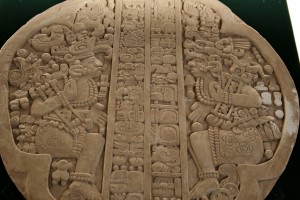
The very first depiction of 'father and son' - dedicated by the son to his father - in South American iconography. Found at the base of the tallest hieroglyph stairway - 2200 stones in total.
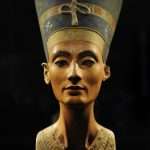
''Darkness''= 'Sunshade'?
"Clement of Alexandria elucidates the idea that Jesus is the son of god by explaining: 'The Son is the consciousness of the Father.' The 'Father' is the Mystery...the dazzling darkness of UNconscious Consciousness." [From the book by T. Freke and P. Gandy. Emphasis, this readers].
The very FIRST example {Micro?}: "And you', he asked. 'Who do you think i am?' Simon Peter answered: 'You are the son of the living god.' Then Jesus asked: Simon son of Jonah, you are favoured indeed! You did not learn that from mortal man; it was revealed to you by my heavenly father. And i say this to you: You are Peter, The Rock; and on this rock i will build my church, and the powers of death shall never conquer it. I will give you the keys of the kingdom of heaven'...What is being said here, and in the context of a joke {i.e., Peter = petros = rock} - and the pun still holds in the original Aramaic, is simply that Peter is the first of many to realize the implications of the 'incarnation'. The keys of the kingdom are given to whoever recognizes and believes in Jesus {and/or what he represents}. This process is virtually automatic, because it results in an alteration of emphasis of will. That which was twisted and misdirected is now brought into right direction {intention?}." ['Extract from the book 'Experience of the Inner Worlds' / G. Knight. Emphasis, this readers].
Right or left hand?
Living water?

 This reader would simply add - ''living'' in relation to 'Gnosis'. Gnosis in relation to the 'cognitive' faculty - represented as a 'rock'. Recall Part 1 {i.e., ''Peter''}. How simple - yet profound. ''Autopilot'' for a {deeper?} read.
This reader would simply add - ''living'' in relation to 'Gnosis'. Gnosis in relation to the 'cognitive' faculty - represented as a 'rock'. Recall Part 1 {i.e., ''Peter''}. How simple - yet profound. ''Autopilot'' for a {deeper?} read.
Side note: ''Right direction'' in relation to ''line of sight''. And/or ''twisted and misdirected'' in relation to Increase/Decrease - gives clues as to the {origins?} working mind set of Homers {'constellation'?} method. Enlarged elsewhere.
Egyptian equivalent: Static/dynamic.
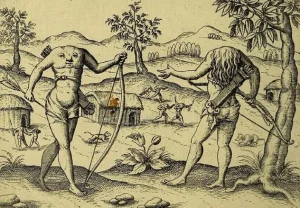 And/or: Firstly, it should be pointed out that while one desciple was called Simon Peter, the other was named Simon Zelotes...meaning 'anger', 'rage' or 'hot' and 'BOIL'. It would appear that this sect was only suitable for raging adherents to the law who boiled with indignation. [Page 95 'Cleopatra to Christ' / Ralph Ellis].
And/or: Firstly, it should be pointed out that while one desciple was called Simon Peter, the other was named Simon Zelotes...meaning 'anger', 'rage' or 'hot' and 'BOIL'. It would appear that this sect was only suitable for raging adherents to the law who boiled with indignation. [Page 95 'Cleopatra to Christ' / Ralph Ellis].
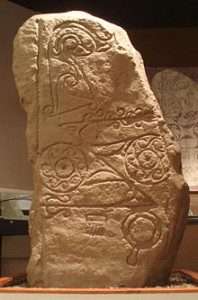
Twist and turns.
The Via Dolorosa (Latin for 'Sorrowful Way', often translated 'Way of Suffering'; Arabic: طريق الآلام; Hebrew: ויה דולורוזה) is a processional route in the Old City of Jerusalem. It represents the path that Jesus took, forced by the Roman soldiers, on the way to his crucifixion. The winding {'crooked'} route from the former Antonia Fortress to the Church of the Holy Sepulchre—a distance of about 600 metres (2,000 ft)[1]—is a celebrated place of Christian pilgrimage. The current route has been established since the 18th century, replacing various earlier versions.[2] It is today marked by 14 Stations of the Cross,[2] nine of which are outside, in the streets, with the remaining five stations being currently inside the Church of the Holy Sepulchre....
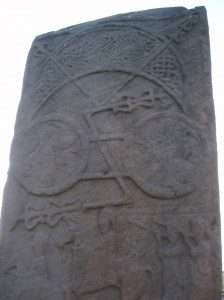
A Pict symbol. Question. Goggle-eyed? A weaving pattern within the crescent of something? Enlarged elsewhere.
The Via Dolorosa is not one street, but a route consisting of segments of several streets. One of the main segments is the modern remnant of one of the two main east-west routes (Decumanus Maximus) through the Roman city of Aelia Capitolina, as built by Hadrian. Standard Roman city design places the main east-west road through the middle of the city, but the presence of the Temple Mount along much of the eastern side of the city required Hadrian's planners to add an extra east-west road at its north. In addition to the usual central north-south road (Cardo Maximus), which in Jerusalem headed straight up the western hill, a second major north-south road was added down the line of the Tyropoeon Valley; these two cardines converge near the Damascus Gate, close to the Via Dolorosa.
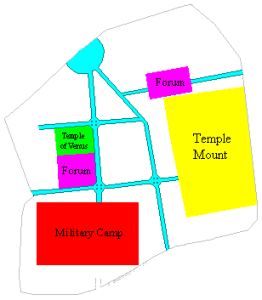
Jerusalem after being rebuilt by Hadrian. Two main east–west roads were built rather than the typical one, due to the awkward location of the Temple Mount, blocking the central east–west route.
If the Via Dolorosa had continued west in a straight line across the two routes, it would have formed a triangular block too narrow to construct standard buildings; the decumanus (now the Via Dolorosa) west of the Cardo was constructed south[dubious ] of its eastern portion, creating the discontinuity in the road still present today.[citation needed]
The first reports of a pilgrimage route corresponding to the Biblical events dates from the Byzantine era; during that time, a Holy Thursday procession started from the top of the Mount of Olives, stopped in Gethsemane, entered the Old City at the Lions' Gate, and followed approximately the current route to the Church of the Holy Sepulchre;[4] however, there were no actual stops during the route along the Via Dolorosa itself.[2] By the 8th century, however, the route went via the western hill instead; starting at Gethsemane, it continued to the alleged House of Caiaphas on Mount Zion, then to Hagia Sophia (viewed as the site of the Praetorium), and finally to the Church of the Holy Sepulchre....
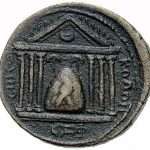
The Emesa temple to the sun god Elagabalus with baetyl at centre.
During the Middle Ages,[dubious ] the Catholics of Jerusalem split into two factions, one controlling the churches on the western hill, the other the churches on the eastern hill;[dubious ] they each supported the route which took pilgrims past the churches the faction in question controlled,[2] one arguing that the Roman governor's mansion (Praetorium) was on Mount Zion (where they had churches), the other that it was near the Antonia Fortress (where they had churches).
What the Crusader Kingdom of Jerusalem called Jehoshaphat Street (Via Josaphat) was where present-day Via Dolorosa partly is.[5] (Today's Via Dolorosa extends westward from the western portion of that street.) Near the ruined Antonia Fortress and north of the Templum Domini precinct, Jehoshaphat Street led eastward to the Jehoshaphat Gate (near or at Lions' Gate on Lions' Gate Street), with the Valley of Jehoshaphat (near or in the Kidron Valley) beyond the gate."

Mercury: Sun / Moon / Cross / Cup symbolism . What symbol represents the 'stone'?
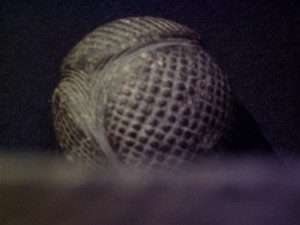 Refresher: "A monk who had meditated long in search of Illumination finally received a great flash of insight. Rushing to his 'roshi' {Zen master}, the monk cried out, 'I have it! I have it! That rock there is inside my head.' "You must have a big head," the master replied, ''to hold a rock that size."
Refresher: "A monk who had meditated long in search of Illumination finally received a great flash of insight. Rushing to his 'roshi' {Zen master}, the monk cried out, 'I have it! I have it! That rock there is inside my head.' "You must have a big head," the master replied, ''to hold a rock that size."
From the bowels of the earth? i.e., spirit 'fire' THAT eventually 'sets in stone'.
Philosophers Stone!
Understand the above to define the following: "The other principle Grail writer, Wolfram von Eschenbach, wrote his Parzival {upon which the Wagner opera cycle is based} between 1200 and 1207. His version is similar to that of Chretien though he claims Chretien has got the story wrong and gives his own slant to it. His version more clearly shows oriental influences, and by calling the Grail a 'stone' rather than a cup, and by other parallels, he connects the Grail with alchemy." ['Experience of the Inner Worlds'].
And/or: " Certainly the most ancient four key symbols of Celtic mythology - the spear, the cauldron, the sword and the stone - have their parallels in the Grail and Arthurian stories wherein important 'messages' seem to come to Camelot via floating 'stones', and the true kingship of Arthur is revealed by a 'test' of pulling a sword from a stone." [Same book]. Try ''sword'' and/or ''floating stones'' in relation to ''glass''. Before those first impressions {tell one - therefore 'lower'?} something else.
No prose intended.
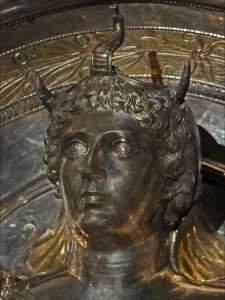
A likely depiction of Cleopatra Selene II wearing an elephant scalp, raised relief image on a gilded silver dish, from the Boscoreale Treasure, 1st century BC.
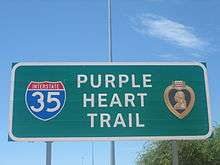 Cleopatra Selene II (Greek: Κλεοπάτρα Σελήνη; summer 40 BC – c. 5 BC;[3] the numeration is modern) was a Ptolemaic princess, Queen of Numidia (briefly in 25 BC) and Mauretania (25 BC – 5 BC) and Queen of Cyrenaica (34 BC – 30 BC[4]). She was an important royal woman in the early Augustan age. Cleopatra Selene was the only daughter of Greek Ptolemaic Queen Cleopatra VII of Egypt and Roman Triumvir Mark Antony. In the Donations of Antioch and of Alexandria, she was made queen of Cyrenaica and Libya.[5][6][7] After Antony and Cleopatra's defeat at Actium and their suicides in Egypt in 30 BC, Selene and her brothers were brought to Rome and placed in the household of Octavian's sister, Octavia the Younger, a former wife of her father.
Cleopatra Selene II (Greek: Κλεοπάτρα Σελήνη; summer 40 BC – c. 5 BC;[3] the numeration is modern) was a Ptolemaic princess, Queen of Numidia (briefly in 25 BC) and Mauretania (25 BC – 5 BC) and Queen of Cyrenaica (34 BC – 30 BC[4]). She was an important royal woman in the early Augustan age. Cleopatra Selene was the only daughter of Greek Ptolemaic Queen Cleopatra VII of Egypt and Roman Triumvir Mark Antony. In the Donations of Antioch and of Alexandria, she was made queen of Cyrenaica and Libya.[5][6][7] After Antony and Cleopatra's defeat at Actium and their suicides in Egypt in 30 BC, Selene and her brothers were brought to Rome and placed in the household of Octavian's sister, Octavia the Younger, a former wife of her father.
Selene married Juba II of Numidia and Mauretania. She had great influence in Mauretania's government decisions, especially regarding trade and construction projects. During their reign, the country became extremely wealthy. The couple had a son and successor, Ptolemy of Mauretania. Through their granddaughter Drusilla, the Ptolemaic line intermarried into Roman nobility for many generations.....

Flag of same.
Side note: Gran Canaria (UK: /ˌɡræn kəˈnɛəriə, -ˈnɑːr-/, US: /ˌɡrɑːn kəˈnɑːriə, -ˈnɛər-/;[2][3] Spanish: [ɡɾaŋ kaˈnaɾja] ⓘ), also Grand Canary Island, is the third-largest and second-most-populous island of the Canary Islands,[4] a Spanish archipelago off the Atlantic coast of Northwest Africa....
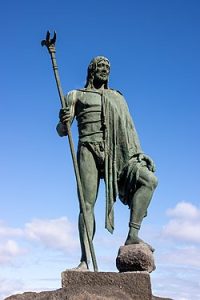
Berber. Rags?
Pliny claimed that the island was named for the dogs on the island, of which two were presented as a gift to Juba, King of Mauretania.[11] This opinion is disputed as when the Europeans arrived on the island, no dogs were found.[11] Another source suggested the way the natives ate fish was doglike and this was the reason for its name.[11] A more plausible assumption is that the island's name derives from the people Canario or Canarii living near the Atlas mountain range.[12] Jean de Béthencourt named the island Gran Canaria as the people on the island were valorous opponents to his conquest.[12]
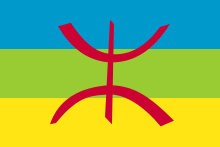 CONTINUED: Cleopatra Selene was born approximately 40 BC in Egypt, as Queen Cleopatra VII's only daughter. Her second name ("moon" in Ancient Greek) opposes the second name of her twin brother, Alexander Helios ("sun" in Ancient Greek). She was raised and highly educated in Alexandria in a manner appropriate for a Ptolemaic princess. The twins were formally acknowledged by their father, Triumvir Mark Antony, during a political meeting with their mother in 37 BC. Their younger brother, Ptolemy Antony Philadelphos, was born approximately a year later. Their mother most likely planned for Selene to marry her older half-brother Caesarion, son of Cleopatra by Julius Caesar, after whom he was named.
CONTINUED: Cleopatra Selene was born approximately 40 BC in Egypt, as Queen Cleopatra VII's only daughter. Her second name ("moon" in Ancient Greek) opposes the second name of her twin brother, Alexander Helios ("sun" in Ancient Greek). She was raised and highly educated in Alexandria in a manner appropriate for a Ptolemaic princess. The twins were formally acknowledged by their father, Triumvir Mark Antony, during a political meeting with their mother in 37 BC. Their younger brother, Ptolemy Antony Philadelphos, was born approximately a year later. Their mother most likely planned for Selene to marry her older half-brother Caesarion, son of Cleopatra by Julius Caesar, after whom he was named.
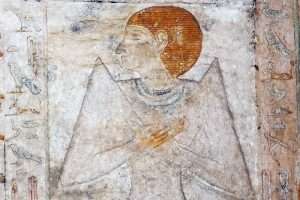
''Eight''?
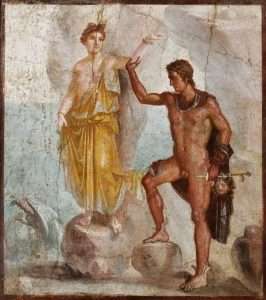
'Silks' ?
Over the next two years, Antony bestowed a great deal of land on Cleopatra and their children under his triumviral authority. In 34 BC, during the Donations of Alexandria, huge crowds assembled to witness the couple sit on golden thrones on a silver platform with Caesarion, Cleopatra Selene, Alexander Helios, and Ptolemy Philadelphus sitting on smaller ones below them. Antony declared Cleopatra to be Queen of Kings, Caesarion to be the true son of Julius Caesar and King of Egypt, and proceeded to bestow kingdoms of their own upon Selene and her brothers. She was made ruler of Cyrenaica and Libya. Neither of the children were old enough to assume control of their lands, but it was clear that their parents intended they should do so in the future. This event, along with Antony's marriage to Cleopatra and divorce of Octavia Minor, older sister of Octavian (future Roman Emperor Caesar Augustus), marked a turning point that led to the Final War of the Roman Republic."
Question. Did Octavian understand a mind set?
Question 2. Could this tell us anything about the final location of her mothers {and Anthony's} tomb?

Code Pink was founded on November 17, 2002, by a group of American anti-war activists: "Women around the world rise up. We call on mothers, grandmothers, sisters, and daughters, on workers, students, teachers, healers, artists, writers, singers, poets and every ordinary outraged woman willing to be outrageous for peace. Women have been the guardians of life -- not because we are better or purer or more innately nurturing than men, but because the men have busied themselves making war."

Brianna Ghey. R.I.P.
Side note: "The difference between a 'castle' and 'palace': Tintagel was a castle, the mans place, wherein the woman's quarters were confined to one part - The Bower, which is a miniature palace wherein the man enters and the women come forward and unhelm him and take charge of his armour and weapons and there entertain him with the arts of peace, thus refreshing him. They tend his wounds and minister to him the graces, the tendernesses and the arts of life. Thus is civilisation born and nurtured. The Bower is a secluded haven of peace in a world of war. It is like the Arc of the Covenant in which the holy vessels are preserved during the sojourn in the wilderness. To each man his home should be a bower whether he returns from his war with the world, which is his formula for rest and comfort of body and refreshment of spirit....The formula of Camelot is the formula of the cultivation of a high civilisation in times of peace, in an ordered environment, and it is a Queens formula as Tintagel is a King's formula." [Page 62/3 'The Arthurian Formula' ].
The Vine?
'Blood of the vine'?
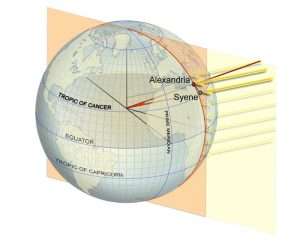
Any shadow?
Continued: ''It was said that a spear standing upright at the tomb of Christ would cast no shadow at midday, because it marked the center point of everything under the sun. When Pope Urban preached the first crusade at Clermont, he declared ''infallibly'' that 'Jerusalem is the middle point of the earth'..." [Page 740/1 'The Womem's Encyclopedia of Myths and Secrets'].
Try 3:9 to enlarge.
Side note: ''The first crusade took place 30 years after the Norman conquest.'' ['The Chase' / 5.1.22].
Side note: The idea of the forest {as royal hunting grounds} were 'invented' by the Normans.
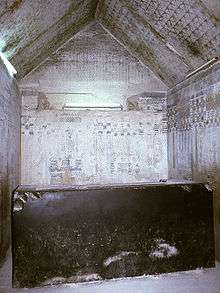
Pyramid Texts in the tomb of Unas. Arched?
From a different perspective: ''The clouds abate! Clearly visible, just above the horizon of our wonderful matter, Sol begins to rise. His triumphal car climbs the arched vault of our miniature empyrean. This is what i have been waiting for, the sign that my calcination was true and my solution sound. The spirit ascends into the Above and soon, as dawn matures to noon, he will shoot his bright glancing spears down into the dragon who holds his dear sister Luna enthralled beneath our sea. Then can begin the grand reunion of Above and Below, the marriage of Sol and Luna, on which the whole of Hermetic philosophy rests.'' ['Mercurius'].
'Orange'?
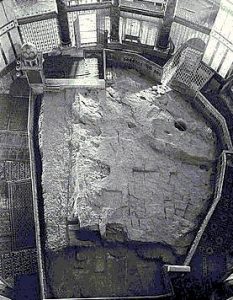
Foundation Stone ''pierced'' S/E corner. Head of the corner?
A side step: A work in progress {the very FIRST one - in the Macro sense of the word?}: Hector or Paris assumes the mantle of the constellation of Orion to enact a role in Homers exposition of the precession of the equinoxes and the nature of the universe...The other 'sons' of Priam who play a role in the Iliad are placed in Orion according to their 'wounds'. Not all Priam son's take an active role in the Iliad, but three stars placed in the constellation according to the Rule of Wounding are Helenus - who is wounded in the 'hand'. Polydorus - killed by a spear through his belt. And Lycaon - who is killed by a blow to the collarbone. The constellation of Ursa Major, the citadel of Troy in Homer's explanation of the changing of the pole stars, was a natural home for those wounded warriors described as the 'SONS OF' citizens of Troy {'city'?}. Using a similar logic, the sons of Antenor were allocated to his constellation of Virgo, and the sons of Panthous given to Libra."
'Cusp' in relation to spear point?
Question. Any ''SONS OF'' in the Greek {'rural'} sense of the 'word'? As a means...?
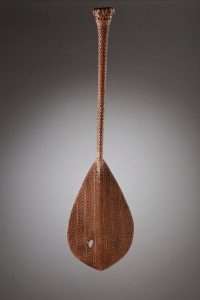
From a different perspective: Austral Islands paddle: ''Ritual vessels, used in some form of dance. But we dont know. And that is what i find personally really mysterious about these.'' ['Antiques Roadshow' / S46 EP8]. 'Living Water' / 'Place of Rowing' to enlarge.
Understanding 'city' in relation to 'rural' / 'Spirit' {B} relative to 'soul' {A} - gives clues as to a {meaning} within the methodology of the story of Troy. Enlarged elsewhere.

Where have you seen it before?
And/or: "It was wise when you framed your question, to associate the idea of various regions with that of 'states of being' in the Dwat: you can't separate them. Just as 'nwt' or city is an assemblage of ''atmospheres'' emanating from 'heaven' and from men, which give the 'city' its character, so also a man's nwt is a complex of influences and impressions that sum up the states of his successive personalities. In the same way a region of the Dwat {'domain'?} is an environment, clearly distinct from another, to which those whose disposition and state are in affinity with it are drawn." ['Her-Bak']. Enlarged elsewhere. All as a means...?

'Handle' to the Austral ISLAND paddles. 'Eight' in total. Twin horned? Just below the 'eight' can be seen twin human figures with raised arms - seated.
Something easier? "Origin'' means two things in mythology. As the content of a story or mythologem it is the ''giving of grounds'': as the content of an act it is the ''founding'' of a city or the world. In either case it means mans return to his own origins and consequently the emergence of something original, so far as accessible to him, in the form of primordial images, mythologems and ceremonies." [Page 14 'Science of Mythology' / C. Jung + C. Kerenyi].

Pierced with a 'spear'? The square and the circle? or just a coincidence? Try ''three and four''? AND/OR: ''Characteristically, Dorn overlooked the fact that the fourth is in this case the microcosmic mortal man, who complements the upper triad. Union {with the homo maximus}- produces a new life {which Paracelsus calls vita cosmographica}.'' [Page 166 'Alchemical Studies' / C. G. Jung].
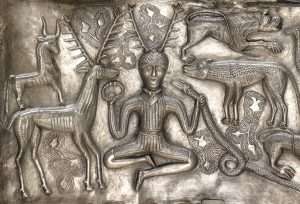
Seated on what?
Eventually one group of men stood out as apparently without a celestial home, and they all shared a common epithet. Each named by Homer as the 'son of'...they included Echepolus, son of Thalysias, Simoeisius, son of Anthemium, and Hypsenor, son of Dolopion, but unlike other 'SONS OF' - none of them were associated with a particular regiment. Following the logic that all 'warriors' must have a place in a constellation, an examination was made to see whether they would fit in the only remaining constellation not to have warriors assigned to it. This was Ursa Major, the constellation that represented the citadel of Troy - that dominates the narrative of the Iliad...It was soon discovered that there were stars in the correct places of the body of the Bear to match the wounds 'suffered' by these 'sons of'...that would put them on an unobstructed line of sight to their 'killers'...with the exception of the 'tail' of the Bear, which is also the 'handle' of the Big Dipper. None of the Iliad's warriors receives 'fatal' wounds in the tail and so none could be placed in the tail of Ursa Major..."
Question. ''Regiment'' in relation to 'City' ? {i.e., as opposed to 'rural'}. Enlarged elsewhere.
To get a ''handle'' on something.

Ancient Iberian head-gear.
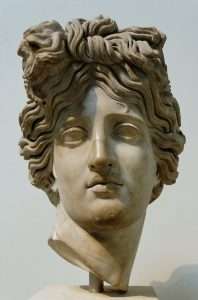
Curl or knot?
Why are ears called lugs?
lugg (of a pan); and appearing also in e.m.E. (1592–1659) as a slang synonym of 'ear'. Of Scand. origin, in an original sense of 'something that can be pulled or laid hold of, an appendage':
And/or: The idiom occurs in R.L. Stevenson’s novel, Treasure Island (1882). The narrator Jim is being treated for a minor injury. Dr. Livesey pulls his ear by pretending the injury is more serious than it really is. So it is not a reproach, but a tease. Animals are sometimes teased by the pulling of their ears. Both the practice and the idiom have fallen out of style.

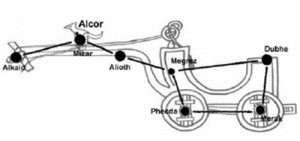 And/or: Meditation in Luxor Temple: "Perhaps there is a room near or below your heart or in your middle area. Maybe the space is a little cluttered with old baggage and worn-out unused things {'attic'?}. Once you have found this space, see what you have to move to clear it....Now in this cleared space, we begin to create our inner temple. It will take its new shape as we focus our minds eye within....Notice that there is an altar here that has been prepared for you. It is bare {'naked'?} and ready to recieve your sacred items. Bring the items you hold sacred: crystals, candles, statues, bells, drums etc....You see a doorway that you had not noticed before....
And/or: Meditation in Luxor Temple: "Perhaps there is a room near or below your heart or in your middle area. Maybe the space is a little cluttered with old baggage and worn-out unused things {'attic'?}. Once you have found this space, see what you have to move to clear it....Now in this cleared space, we begin to create our inner temple. It will take its new shape as we focus our minds eye within....Notice that there is an altar here that has been prepared for you. It is bare {'naked'?} and ready to recieve your sacred items. Bring the items you hold sacred: crystals, candles, statues, bells, drums etc....You see a doorway that you had not noticed before....
'Chamber of Secrets' at Hogwarts?

Collective or individual?
Continued: It may be beyond your altar or in a different part of the temple that you had not explored. As you approach this gateway, you observe how it is made. There may be something writen on the door or on the lintel...THERE IS NO HANDLE on this door. It can only be opened with the mind...." [Page 213/14 'Invoking the Scribes of Ancient Egypt'].
Gobekli-tepe {Potbelly hill}.
In mythology Ursa Minor is Arcas, the son of Zeus and the maiden Callisto (Ursa Major). Arcas and Callisto were changed into bears and placed in the sky by Zeus in order to be protected from his jealous wife Hera. Within the constellation of Ursa Minor can be found the North Star, Polaris.
Do bears have tails?
Short or long?
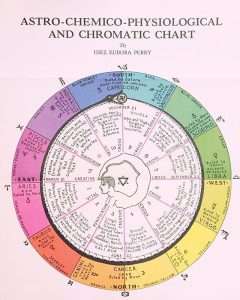
Head/Feet.
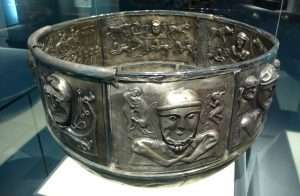
From a different perspective: A rebirth. A COSTLY one?
A working example: A terracotta pot found in Athens in ancient Agora {a 'gathering' place, and/or 'a hive' of activity} - with 'handle'. In the ''crafts area'' of ancient Athens {blacksmith?}. Scratched in ancient Greek letters {Linear A/B?} - the names of men/women {one 'third' women}. Inside found the 'head' and 'feet' of a chicken and capped off by a large 'nail' that enters the far side {away from the handle} to 'pierce' {'wounded'?} the base of the pot/jar close to the area under the handle. In other words - from the perspective of the handle = S/E - N/W. The only two words that are not names are ''we bind.'' Small coin of ''low value'' also found at the edge of the nail. ['Strangest Things' / S2 EP4].
Conclusion: ''Dark magic is the only theory proposed so far that holds water.''

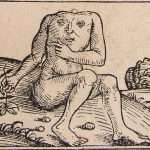
Remedy?
Question. Male or female chicken?
Hen?
'Fiery' to enlarge. Then 'headless' / 'egg' / 'transcendent third' / spear point etc.
The idiom "running around like a headless chicken" dates back to the 18th century and originated from a popular nursery rhyme called "The Headless Horseman". In this rhyme, a headless horseman rides through the countryside, scaring everyone he encounters. The phrase became popular and was later used in various forms of literature and media, including poetry, novels, and films. Over time, the meaning of the idiom has evolved to describe someone who is behaving in a similar way, without any clear direction or purpose.
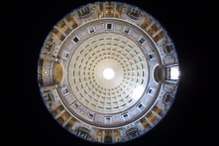
Oculus = ''Bulls eye''.
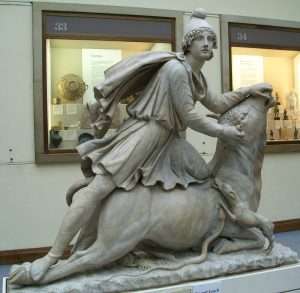 Continued: ''The Greek word kentauros is generally regarded as being of obscure origin.[3] The etymology from ken + tauros, 'piercing bull', was a euhemerist suggestion in Palaephatus' rationalizing text on Greek mythology, On Incredible Tales (Περὶ ἀπίστων), which included mounted archers from a village called Nephele eliminating a herd of bulls that were the scourge of Ixion's kingdom.[4] Another possible related etymology can be "bull-slayer." [Wiki].
Continued: ''The Greek word kentauros is generally regarded as being of obscure origin.[3] The etymology from ken + tauros, 'piercing bull', was a euhemerist suggestion in Palaephatus' rationalizing text on Greek mythology, On Incredible Tales (Περὶ ἀπίστων), which included mounted archers from a village called Nephele eliminating a herd of bulls that were the scourge of Ixion's kingdom.[4] Another possible related etymology can be "bull-slayer." [Wiki].
Question2. The tail end of something begins the process of? Among others try ''handle''.
REFRESHER: ''It was said that a spear standing upright at the tomb of Christ would cast no shadow at midday, because it marked the center point of everything under the sun...."
Side note: At Elephant Island - no shadow cast in a well - as discovered by Eratosthenes. If that be a ''center'' {if only within Egypt} what distance is implied by way of radius/diameter. Ethiopia? Horn of Africa?

Many skeletons found in fetal position with elongated heads. {'ears of corn'?}.
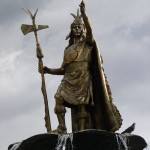
Lily or lotus head?
And/or: At Machu Picchu ''the city in the clouds'' the ONLY 'curved' building is found between two peaks {'horizon'?} ALONG a ridge - 180 and 90 degrees enclosed within same building. As is a polished granite stone aligned to the winter solstice. Many theories abound. ''Aligned with the sun''. Close by the Intihuatana Stone which casts no shadow at the Equinox's - is purposely sculptured at 13 degree's....'' ['Unearthed : Hidden City of the Inca's' / Discovery Channel / 2021].
Try 2:2 to enlarge.
Side note: ''....May is the season of flowers, and the hawthorn, or may-tree, rules it. Olwen, the daughter of 'Giant Hawthorn' had hair as yellow as the broom, fingers pale as wood anemones, cheeks the colour of roses and from her footprints the white trefoil sprang up.

Glenbuck to enlarge.
 And/or: "The Sceach Geal is a tree that grows in Ireland and throughout the north of the world and its name means “bright thorn” or moon thorn. It was known in Brehon law as an Aithig fedo or a Commoner of the Wood, a quickthorn like its ferocious cousin the blackthorn, and it is also called hawthorn, the gentle bush, the lone thorn, the May tree, the hedgethorn, the Beltaine tree, the Gentry tree, the May blossom, the whitethorn and many other names.
And/or: "The Sceach Geal is a tree that grows in Ireland and throughout the north of the world and its name means “bright thorn” or moon thorn. It was known in Brehon law as an Aithig fedo or a Commoner of the Wood, a quickthorn like its ferocious cousin the blackthorn, and it is also called hawthorn, the gentle bush, the lone thorn, the May tree, the hedgethorn, the Beltaine tree, the Gentry tree, the May blossom, the whitethorn and many other names.
In Ireland the whitethorn is best known as the fairy tree, and it would be a brave farmer who even thought of so much as trimming one back, to this very day! This is particularly true of lone trees standing in a field or other place having never been planted by human hands. Not that long ago at all, a motorway was being built from Limerick city to Galway and it had to be rerouted because a single fairy tree stood in its path, delaying the road for years. The white blood of the fairies would sometimes appear around the tree after their battles, or so the locals said."

Working example: ''Jacob has good energy, but sometimes its misdirected. He needs to learn to direct it in the right way. He has to control his emotions. Sometimes he can be a thorn in my backside.'' {Keith: 'Deadliest Catch' / S19 EP6}.
'
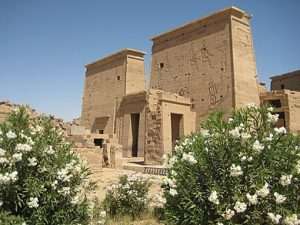
''H'' = Face to face? And/or: IQNA – The Holy Quran, in Surah Muhammad (PBUH), mentions four rivers in paradise in which clear water, milk, Sharaban Tahur (wine that does not intoxicate), and pure honey flow.
'In the Arthurian sagas is a story about Sir Gawain marrying a hag called Dame Ragnell. He must answer the ancient riddle ''what does a woman trully want?'' The answer is ''sovereignty over herself {animus?}.'' When Gawain accepts his brides right to her own self-determination, she changes into a beautiful maiden {anima?}. This is the teaching of the hawthorn; the law of sacredness demands repect. The hawthorn also has many connections with the heart, and it is this knowing one's own heart that is the key to the mystery - allowing the beloved to be true to their heart, and being true to ones own as well. Hawthorns are sacred to the Roman goddess Cardea, who, symbolised by the hawthorn itself, is the goddess of doorways and weddings....Old folk songs refer to oak, ash, and thorn as a sacred trio; the oak is masculine energy representing the 'god', the thorn feminine ENERGY representing the 'goddess,' and the ash is the World Tree.'' [Pages 83/90 'Celtic Tree Magic' / D. Forest].
 And/or: ''By day there is an exhalation {nightly one = inhalation}, as the sun comes forth, expressed by the AIR god, Shu, joyfully raising the sunboat aloft in the Book of Day's first hour. This daytime sky emcompassed by Nut is the sun gods 'light span' of life, beginning with his birth in the first glimmer of light {'shining'?} in the S/E and journeying in increasing brightness to noonday SOVEREIGNTY, followed by fullness and maturity in the afternoon of life. Then as light wanes, he descends into the sunset of old age in the N/W, where the great sky goddess swallows the sun in order for him to be reborn again at dawn.'' [Page 17/18 'Hathors Alchemy' / A. Roberts].
And/or: ''By day there is an exhalation {nightly one = inhalation}, as the sun comes forth, expressed by the AIR god, Shu, joyfully raising the sunboat aloft in the Book of Day's first hour. This daytime sky emcompassed by Nut is the sun gods 'light span' of life, beginning with his birth in the first glimmer of light {'shining'?} in the S/E and journeying in increasing brightness to noonday SOVEREIGNTY, followed by fullness and maturity in the afternoon of life. Then as light wanes, he descends into the sunset of old age in the N/W, where the great sky goddess swallows the sun in order for him to be reborn again at dawn.'' [Page 17/18 'Hathors Alchemy' / A. Roberts].
Refresher: ''In the 2017 film 'Justice League', the character Wonder Woman has an alter ego with the surname Prince.'' ['Impossible' / BBC2].
Mud brick / Stone? {i.e., palace/temple}.
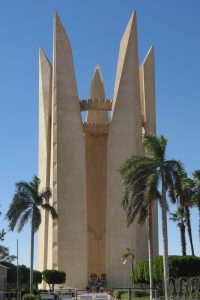
Nubian Lotus.
Define {'see'} the above to get an idea {''hang on''?} - the following: The Cerrigydrudion Crown. A Celtic piece of ancient artwork. Bronze {'red'?} and leather {'cow'?] headpiece. ''Possibly signifies 'warrior' headgear - with palm leaf and lotus designs - neither of which are common to these islands {UK}.'' ['Inside Museums: St. Fagan/Cardiff. Sat.TV].
A working example: Recall Odysseus journey back to his homeland. Lotus island being its 'first stage'.
'Spirit/Soul' - as a means....?
Question. What would ''hang on'' be represented with - if anything?
Exercise: {as ONE example}: ''Searching for a handle on the moment'' {'Men in Black'} in relation to: " In an important sense, Saturn is the ruler of the 'birth' chart itself, for 'Saturn' is Time, Chronos, as well as that which fixes a moment in time, creates through birth, a separate embodiment of reality, and then sustains and works out through 'time' all the meaning and challenges of that archetypal moment." ['Saturn and the Theoretical Foundation of an Emerging Discipline']. All as a means...?
Understanding that {'Saturnian'} principle gives a possible start/end point to certain monuments together with an understanding of the mind set that 'designed' them.

Whats the crack? {pun}. Question. What would the remedy be? Whats within the offering?
Side note: It has recently been proven that at the time of the pyramids it was lush land all around - ''a rich savanna'' - but by the end of the Old Kingdom a desert was in progress due to climate change. The Nile had at least a twenty year drought period. Elephantine which had once been two islands eventually became ONE. The 'marshland' between the two eventually becoming 'dry'. [Ancient Egypt's Darkest Hour' / Hist. Channel / Jan. 2021].
Question. The Famine Stela - talks about drought at the time of Djoser and Imhotep - Coincidence?
Question. Giza complex = Cancer or Capricorn related?
Upstream or downstream?
Light or dark {shadow}?

'Joyous'?
 A working example: ''And with some final ceremonial words...she circumnavigated the circle for the last time that night. Returning to the east, she turned and faced us: 'Our circle is open but never broken. Merry meet, and merry part, and merry meet again!'...Joy filled the room...Freedom swept aside the 'terrors' that had once constrained....Where a 'knot' had once filled my heart, now i felt 'movement' and possibility. I stepped outside of the circle, changed by the 'fire' magic we did that 'moonless' night when the dark orb was in Cancer and the sun in Leo.'' [ Page 131 'The Book of Shadows' / P. Curott].
A working example: ''And with some final ceremonial words...she circumnavigated the circle for the last time that night. Returning to the east, she turned and faced us: 'Our circle is open but never broken. Merry meet, and merry part, and merry meet again!'...Joy filled the room...Freedom swept aside the 'terrors' that had once constrained....Where a 'knot' had once filled my heart, now i felt 'movement' and possibility. I stepped outside of the circle, changed by the 'fire' magic we did that 'moonless' night when the dark orb was in Cancer and the sun in Leo.'' [ Page 131 'The Book of Shadows' / P. Curott].
The above an example of the 'ritual' Way. The ''study'' Way {of the Reader} - would be - by way of - that inner understanding {'Duality'} of such concepts as Static/dynamic. Waxing/Waning. Tied/UNtied . Terror/Peace etc. etc.
And/or: ''The Moon is the largest in the solar system relative to its planet.'' {'The Chase' / 6.1.22].

To many lagers?
Side note: ''The setting of the sun stands for setting up the foundation in the undifferentiated; this is the infinite. 'Higher Good' is like water; flawlessly pure; this is the ultimate. The master is the ruler that produces movement - is symbolized by wood, it is represented by trees in rows {'line of sight'?}. The rows are in sevens, which stand for this light of the seven openings of the 'heart'....'' [Page 34 'The Secret of the Golden Flower' / T. Cleary].

''Freedom of the soul'' = Spirit/Soul? Male/female. Gent/lady. WHICH AND WHY?
Continued: ''The Arabic name of the Great Sphinx, Abu al-Hôl, translates as "Father of Terror". The Western name "Sphinx" was given to it based on the legendary Greek creature with the body of a lion and the head of a lady, however the Egyptian Great Sphinx has the head of a man, and therefore the name is not technically accurate.'' [http://hellenicaworld.com].
And/or: ''In a sense it may be regarded as the hallmark of the true Gnosis, possessed by the most highly accomplished pneumatic or spiritual individual. Abraxas, as the all-pervading energy of being, is thus the sum of and the liberator from the cycle of necessity, freeing man from the agony of time, or as Mercea Eliade called it, the terror of history. The 365 zones of the inner realms, which are outwardly manifest as the same number of days, represent the sum total of psychological obstacles which stand in the way of the feedom of the soul, causing its death like entombment in limitation.'' [Page 87 'The Gnostic Jung' / S. A. Hoellier].
'Mercurius'?
And/or: Colossians 3:2: ''Set your mind on the things above, not on the things that are on earth.''
And/or: Genesis 11:6: ''The Lord said, “Behold, they are one people, and they all have the same language. And this is what they began to do, and now nothing which they purpose to do will be impossible for them.''
Source: https://bible.knowing-jesus.com/topics/Visualization.

''Axes'' in a different form. Enlarged elsewhere.
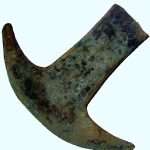
Hoe/Axe money. Aztec currency. Also seen throughout ALL cutures, i.e., Stonehenge and Easter Island. Enlarged throughout.
Continued: "In mediaeval astrology there are two 'doors' of the Moon and Saturn. The doors of the Moon are esoterically linked with birth, while the doors of Saturn are linked with 'death'. The fact that the Moon has rule over Cancer, while Saturn has rule over Capricorn, is linked with this notion of the doors. Since Cancer and Capricorn are opposite each other in the zodiac, the axes of the Moon and Saturn 'lie in a straight line' {'steep'?} - representing the direction of life and death. This has long been recognised as one of the symbolic devices in mediaeval buildings which are enhanced by zodiacal or planetary symbolism. An examination of the orientation of the zodiac in relation to the church nave will indicate that this Cancer-Capricorn axis lies exactly on the orientation down the center of the isle...the pilgrim moves away from the 'darkness' of Saturn to the creative realm of Cancer. It is no accident that many of the mediaeval horoscopes for the beginning of the world - the so called 'Thema Mundi' - give the important ascendant {S/E?} degree in Cancer , which is associated through its ruler with the life forces." [Page 129. 'The Secret Zodiac'].
Question. ''Doors'' or 'corners' ?
Try ''navel''.
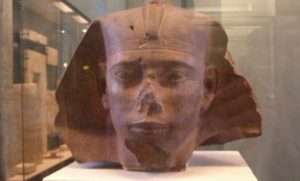
He is the king who introduced the royal title Sa-Rê (meaning “Son of Ra”) and the first to connect his cartouche name with the sun god Ra.
REFRESHER: "To go in a straight line, one has to follow one's nose."

Rising above the horizon? Analogy: ''The chief of the Snake Kings - was known as 'Sky Witness'....'' ['Lost Cities With Albert Lin' / S.2 E.2].
Question. Is Mr Allen aware of subject material and/or ''mind set''?
And/or: The toes of Tutankhamun were 'cut off' so as to fit into his sarcophagus. For the 'lid' to fit.

Scorpio = 'Longest' constellation? N.B Two ''swimming ducks'' on its tail end.
And/or: ''The star is also notable for its less famous name, Arkushanangarushashutu, which is the longest of all the known star names. It means “the southeast star in the Crab” in ancient Babylonian, it marked the thirteen{th} ecliptic station of the ancient Babylonians....In Chinese astronomy, Ghost (Chinese: 鬼宿; pinyin: Guǐ Xiù) refers to an asterism consisting of Theta Cancri, Eta Cancri, Gamma Cancri and Delta Cancri.[12] Delta Cancri itself is known as the fourth star of Ghost (Chinese: 鬼宿四; pinyin: Guǐ Xiù sì).''
The more commonly used name, Asellus Australis, means “southern donkey colt” in Latin.
Delta Cancri also lies close to the ecliptic and can be occulted by the Moon and, however rarely, by planets.
Delta Cancri was involved in the first recorded occultation by Jupiter: "The most ancient observation of Jupiter which we are acquainted with is that reported by Ptolemy in book X, chap. iii (sic), of the Almagest, ...when the planet eclipsed the star known as (Delta) Cancri. This observation was made on September 3, B.C. 240, about 18h on the meridian of Alexandria."
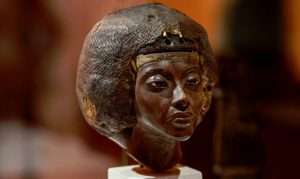
Libyan daughter with two serpents on 'forehead'.
Example: Under one of the 'three' giant pyramids {at its deepest level} within the Teotihuacan City culture can be seen one small 'naked child' with three female figurines looking straight upwards through the steep shaft in the center of the pyramid. ['Blowing Up History' / S2 E3]. Just as at Saqqara in Egypt. The Step Pyramid. Djoser sarcophagus in HEAVY GRANITE at the base of the pyramid at its deepest level - in the center of a labyrinth of tunnels - looking upwards towards the sky. Represented in blue relief with five pointed stars. A different take on the same THEME.
Among others try Naked/Garment. Steep/Spiral. Granite/Limestone - to enlarge.
''Three Daughters''?
From a different perspective: ''The four pointed star is also a recurrent motif at Pottery Mound in New Mexico, located S/E of Acoma Pueblo on the west bank of the Rio Puerco, a tributary of the Rio Grande. A series of mural frescoes found in a number of excavated rectangular kivas depict four pointed stars with human faces {''soul faces''}...''
Therefore 'five'?
Continued: ''Many of these star faces have feather ruffs, some of which are attached to rattlesnakes. Here too we find the feathered serpent archetype....This large pueblo was built on a FLAT topped pyramid shaped mound, which suggests a Mesoamerican influence.'' [Page 164 'The Orion Zone'].
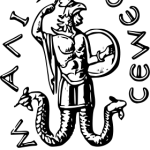
In a different form. What about 'three'?

'internal' ?
Something extra: "The Roman cult of Mithras has associated with it the figure of Aion: a lion headed god swathed by a serpent. He represented boundless time, which held sway over the ages and cyclic divisions of the year. In his hands he carried the keys of the solstices: a silver one which opened the Gate of Cancer, the Way of the Ancestors, and a golden one which opened the Gate of Capricorn, the Way of the Gods, which lead beyond the process of birth and dying and through which the 'gods' could descend to earth. These two ways represent eternal laws, as unchanging as the universe itself, and they can also be seen as akin to the two traditions which are the subject of the present work...." [First chapter of the book 'The Western Way'. Vol 2. Entitled 'The Outward Spiral'].
Which represents the 'Outer'? AND THEREFORE and/or ''inner''? Both as a means....?
Elephant?


“Most certainly, I tell you, one who doesn’t enter by the door into the sheep fold, but climbs up some other way, is a thief and a robber."
And/or: "In Mithraism, which descended from the Persian Mysteries, Mithras stands as a mediator between light and dark, a position adopted by his followers ~ as, generally, by both the modern magician (see chapter and the follower of Christ (see chapter 2). In humanity, the battle for the soul is fought out in the territory of the flesh. Mithras, entering there, keeps all in balance. In this he indeed prefigures Christ, with whom he shares a number of other similarities — at times to a startling degree. Mithras is horn in a cave on 25 December, watched over by shepherds, and at the end of his earthly life held a last supper with his elect followers before departing mysteriously for heaven. According to some sources he is supposed to have suffered crucifixion and to have risen again three days later: he will come again as a judge at the end of time and lead his followers to heaven (340).....
'Twentyfive'?
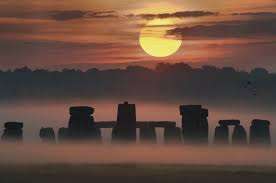
Which and why? Question. Mortise and tenon = a coming together? Right angles within a circle? A mortise and tenon (occasionally mortice and tenon) joint connects two pieces of wood or other material. Woodworkers around the world have used it for thousands of years to join pieces of wood, mainly when the adjoining pieces connect at right angles.

Underworld or Overworld?
While the Mithraic mysteries succeeded those of Zoroaster they followed those of Dionysius, through which the core of Hellenic mystery teaching found its way into the Western Mystery Tradition. Indeed, two streams of consciousness are discernible within the Classical mysteries which we might call, respectively, Dionysian and Apollonian. The mysteries of Dionysius were those of the sacrificed king: they pertained to the underworld side of things, the chthonic and estatic cult of maenads and bacchantes. The Apollonian mysteries on the other hand, related to reason, to the heavens and to order, in contradistinction to the chaotic mysteries of Dionysius. Orpheus, whose mysteries grew out of the preceding cults, combines both facets within one. He has the lyre and the gift of music from Apollo, yet ends like Dionysius, torn apart by Thracian bacchantes: the shamanic practices of the Native Tradition overlapping the priestly function of the mystery school. In the mysteries of Dionysius we again meet the theme of the divine spark trapped in matter.

'five'.
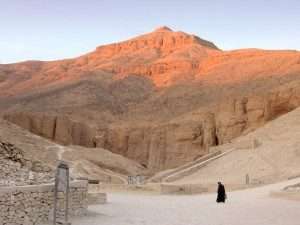
''She who loves silence''. 'Fire' and 'water'. Which and why?
In this case the divinity is literally torn apart by the Titans and eaten by them after being cooked. Zeus, the Demiurge, seeing this destroys the Titans, and from their fragmented substance creates mankind. Thus elements of both Titanic and Dionysiac force are present within man; the Titanic element holds sway, creating the warring nature of mankind. Only when total harmony and balance exist is Dionysius reborn and the perfection of all things brought about. In cosmological terms the Titans are represented by the twelve signs of the Zodiac which rule over our lives: Dionysius is the sun which warms us and causes the fruition of matter. Dionysius belongs with those gods who descend into the underworld, either in search of enlightenment or of some lost aspect themselves. Psyche’s quest for Cupid, that of Ishtar for Tammuz, of Isis for the scattered members of Osiris or of Orpheus for Euridice, are all synonymous with the search for the absolute by the initiate. In the mysteries this is interpreted as the fragment of divinity within the seeker - through ritual he or she follows the god or goddess on their journey, returning either successful or not, according to their individual merits. At Eleusis, where the mysteries of Demeter were celebrated every five years, the candidate of the lesser mysteries underwent a symbolic journey in which the quest for her lost child Persephone in Hades was re-enacted with the would be initiate in the role of Demeter.
The journey within was that of the darkened soul the candidate passed through a door into total darkness, if he survived the experiences met within he passed through a second door into brilliant light — symbolizing rebirth into the heavenly sphere. Here he actually met the gods, experiencing Demeter’s journey as his own recovery of lost enlightenment." {'The Western Way' / C+J Matthews}.

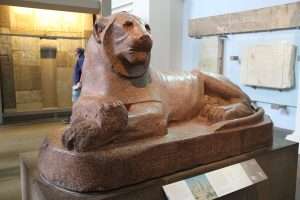
Gebel Barkal lions. At rest?
SIDE NOTE: A trademark for the regional unit of Serres, a symbol of Macedonia… The Lion of Amphipolis is undoubtedly one of the most significant preserved monuments of the 4th century BC. It has been restored and stands next to the old bridge of Strymonas river at the regional street Amphipolis-Serraiki Akti. After the last discovery of the funerary enclosure of the “Kasta” mound in ancient Amphipolis, according to the research results of the 28th Ephorate of Prehistoric and Classical Antiquities, the burial monument of the Lion is closely related to the grave marker of the burial mound, which is in fact its foundation and is placed in the central and highest point of the mound, also following the geometry of the enclosure.
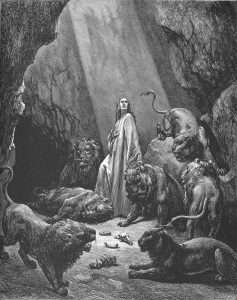
Daniel replies that his God had sent an angel to close the jaws of the lions, "because I was found blameless before him". The king commands that those who had conspired against Daniel be thrown to the lions in his place with their wives and children, and that the whole world should tremble and fear before the God of Daniel.
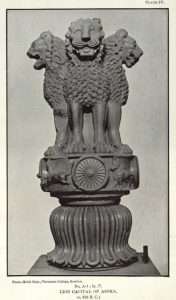 The excavation of the burial mound, which is in progress, has brought to light an important funerary enclosure, unique in its kind, which is dated to the last quarter of the 4th century BC, with marble bases, jambs, crownings and other superstructure parts, of 3m height, and a total length of 497 m. So far 300 metres have been excavated. The unique construction of the funerary enclosure with the use of architectural members of Thasian marble, and the important historical period during which it was built, led us to assume that there are important tombs within the enclosure, which only the continuation of the excavation survey will reveal.
The excavation of the burial mound, which is in progress, has brought to light an important funerary enclosure, unique in its kind, which is dated to the last quarter of the 4th century BC, with marble bases, jambs, crownings and other superstructure parts, of 3m height, and a total length of 497 m. So far 300 metres have been excavated. The unique construction of the funerary enclosure with the use of architectural members of Thasian marble, and the important historical period during which it was built, led us to assume that there are important tombs within the enclosure, which only the continuation of the excavation survey will reveal.
The Tomb of Kasta Amphipolis and the monument of the Lion have comparable architectural features and they both date back to the last quarter of the 4th century BC. The brecciae (fragments of marble processing) found near the grave marker at the top of the Kasta mound, show that there is a big marble monument, namely the Lion and its base” said Director of the 28th EPCA Katerina Peristeri.
The excavations at the funerary enclosure of the “Kasta” mound revealed that a big part of the enclosure had been demolished during the Roman era. Consequently, several architectural members are not in there original place.
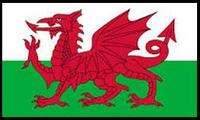
''The tongue of the Welsh dragon is the symbol of the Welsh Language Society.''
According to historians and archaeologists, the face of the Lion, which has always been a sacred symbol of Macedonians, was looking towards the city, thus expressing the importance and glory of it. The Amphipolis Lion was erected as a symbolical monument, in order to express the power of the city, as was the case with the Lions of Delos. Furthermore, according to a legend, its sculptor (whose identity is unknown), after finishing his work, which was also the peak of his career, faced an unpleasant surprise. The Lion missed its tongue. In desperation, the sculptor threw the Lion to the Strymonas river, so that no one would see it.
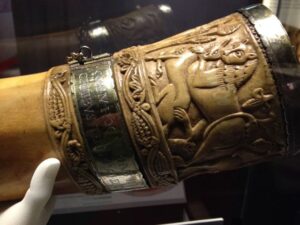
'Grip' to enlarge.
Midas / Barber / River to enlarge.
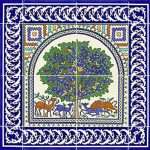
Temple of the winged lion at Petra.
A practical example: ''I was the shyest creature in the world, but i had a lion inside me that wouldn't stay quiet.'' Ingrid Bergman.
''There's a fire within my soul.'' {'Mamma Mia' / Abba].
Anima/Animus?
Try Red lion / Green lion to get closer to a mindset.

He is the king who introduced the royal title Sa-Rê (meaning “Son of Ra”) and the first to connect his cartouche name with the sun god Ra.

'Eight' pyramids built from Djoser to Djedefre. Khufu =Fifth. THEN Djedfere {'six'} THEN BACK TO Khafre {'seven'}. Finally Menkaure.
AND/OR: "Of what, then, does the Corpus Hermeticum consist. Basically it is a series of exchanges, purporting to be between pupil and master, or between Hermes Trismegistos and his ‘sons’ (i.e. disciples) of various names. They are often repetitive and cover much of the same ground in varying degrees of complexity. The first, and perhaps the best known, is the Poimandres , a description of the creation cast in the form of a dream. The (here unnamed) adept falls asleep and is visited by Poimandres (Mind of the Sovereignty) who explains to him all that he has wished to know concerning ‘the things that are, (how to) understand their nature, and get knowledge of God’ (302). When he had thus spoken, forthwith all things changed in aspect before me, and were opened out in a moment. And I beheld a boundless view all was changed into light, a mild and joyous light, and I marvelled when I saw it. There follows a description of the creation, a mingling of light and dark from which comes forth ‘a holy Word . and me thought this Word was the voice of the Light ’ When the seeker desires to understand what he has seen, Poimandres tells him: ‘That light is I, even Mind, the first God and the Word which came forth from the Light is the son of God.’
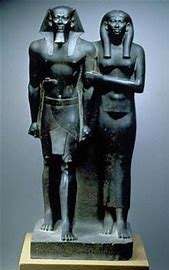
Wednesday's child?
 When the dreamer asks how this may be, he is told: Learn my meaning by looking at what you yourself have in you, for in you too, the word is son, and the mind is 'father' of the word. They are not separate one from the other, for life is the union of word and mind (ibid) . Again and again this message is affirmed there is a god within which gives life to the body and inspiration of all that we do: events in the sphere of incarnation reflect those in the heavenly sphere. It is this emphasis on unity rather than disharmony {'chaos'?} which marks out the Hermetic mysteries unity of all things, of God with man, of higher with lower, of divine with mundane. It finds its clearest expression in the Emerald Tablet of Hermes with its famous injunction ‘as above, so below’, so often quoted and so little understood by occultists throughout the ages Various legends exist concerning the origin of the Emerald or Smagdanne’ tablet. According to one source it was found by Apollonius of Tyana who entered a hidden cave and took the tablet from between the clasped hands of the corpse of Hermes himself. {Page 218 'The Western Way'}.
When the dreamer asks how this may be, he is told: Learn my meaning by looking at what you yourself have in you, for in you too, the word is son, and the mind is 'father' of the word. They are not separate one from the other, for life is the union of word and mind (ibid) . Again and again this message is affirmed there is a god within which gives life to the body and inspiration of all that we do: events in the sphere of incarnation reflect those in the heavenly sphere. It is this emphasis on unity rather than disharmony {'chaos'?} which marks out the Hermetic mysteries unity of all things, of God with man, of higher with lower, of divine with mundane. It finds its clearest expression in the Emerald Tablet of Hermes with its famous injunction ‘as above, so below’, so often quoted and so little understood by occultists throughout the ages Various legends exist concerning the origin of the Emerald or Smagdanne’ tablet. According to one source it was found by Apollonius of Tyana who entered a hidden cave and took the tablet from between the clasped hands of the corpse of Hermes himself. {Page 218 'The Western Way'}.
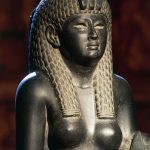
Cleopatra with 'three'. {''Three and four''?}.
CONTINUED: "If the reader refers to the first study of this series he will find an analysis of the significance to be attributed to the two axes - horizontal {i.e., E/W} - and meridian {i.e., Nadir/Zenith, therefore S/N} - which serve as a 'frame of reference' in the type of astrology {i.e., constellational as opposed to tropical}, which deals with the twelve houses." ['12 Astrological Houses' / D. Rudhyar].

S/W 'corner' = 1st /4th/7th or the 10th?
REFRESHER: "The truly creative accomplishment of the human individual is accomplishment in totality and in plenitude of humanhood; and the framework of such a creative accomplishment is provided by the four basic phases of experience represented by the four ''angles'' {corners} of the birth-chart - first, fourth, seventh and tenth houses. These constitute the cross of human living: the permanent self, the rooted and centred personality...At the center of this cross, when lived in balanced {Libra?} activity and in the conscious use of power {'meridian' and/or 'grace'?}, the 'Rose' of human plenitude blossoms forth. This is the goal of human accomplishment and unless this goal is kept clear and strong throughout the phase of experience represented by the ninth house, then only the negative {'scorpion'?} or illusive aspects of this house {temple?} are known...'' ['The 12 Astrological Houses'].
Question. If ''corners'' - what represents 'gates'?
Try ''Sagittarius'' to 'see' something that such authors as Mr Jenkins are still in the dark about. While remembering that objective clause {i.e., grounded - 'Earth', therefore Capricorn?} i.e., ALL AS A MEANS...?
Side note: The 'WOW' signal - a 72 second window - ''appeared to come from the constellation Sagittarius'' {August 15th 1977}.
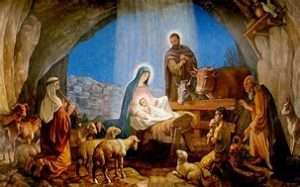
"Since Cancer and Capricorn are opposite each other in the zodiac, the axes of the Moon and Saturn 'lie in a straight line' {'steep'?} - representing the direction of life and death." Upper or lower 'rooms'? AND/OR: To go in a straight line - one has to follow ones nose.

"A mortise and tenon (occasionally mortice and tenon) joint connects two pieces of wood or other material. Woodworkers around the world have used it for thousands of years to join pieces of wood, mainly when the adjoining pieces connect at right angles." And/or: "The strongest joint in the body is the knee."
Continued: And/or: "From the 'Ascendant' to the 'Nadir' {fourth house cusp} human consciousness reaches down to a concrete foundation...The zodiacal sign Cancer is the fountainhead of that indispensable process of concentration and focalization of energies...Cancer is that section of the zodiac from which the specialised energies that build everything related to personal ego, feelings, home {'House'}, and so on, are generated. It refers to the time of the summer solstice, when the sun is highest in the sky and its rays are most potent. These 'rays' strike deep into the earth..." ['The Zodiac as the Universal Matrix'].
Summer solstice in relation to Sirius/dog days/ new year - the beginning {fountainhead?} of something. ''Head of the corner'' ?
Question. Which corner? Try ''kennel''.
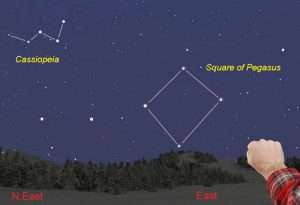
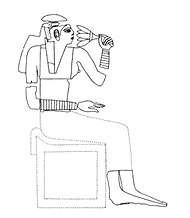
Wife / Mother / Grandmother of the Old Kingdom pharaohs. Question. Seated in a 'house'?
A working example: ''The woundings of our lives can cause the withdrawal of substance, the leaching of our spirits {'leak at the seams'?}....'Wisdom through suffering', Sophocles said.....for it is the trials of wounding that all our immature or shadowed parts rise to meet us.....When i graduated from high school, my lessor selves - jubilant and inflated from a star-strewn adolescence - were just about ready for a spectacular fall....My college career began in one of the heavenly antechambers but proceeded gently downward, with occasional slight upturns until it plunged headlong into the most complete misery i had ever known. From this nadir, i rose again to a safe harbour in purgatory {'middle way'?}, until i finally graduated into a kind of redemption....but not before wounding had taken its toll....I discovered that the wounding pathos of our own local stories contains the seed of healing and of transformation....All myth, in fact, has wounding at its core....'' [Page 257/267 'A Mythic Life' / J. Houston].
Q. S. Lam for another.
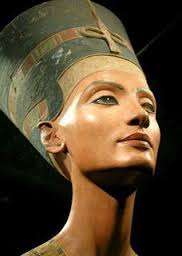
''The beautiful lady has come'' {Cinderella?}. Analogy: ''Transition is my middle name. It is what my life and work are all about, playing midwife to the transition {'Tut' link} - that is trying to occur in humans, animals, relationships, and even cultures - to move beyond the barriers of our bodies and minds to answer a 'higher' call.'' [Page 53 'A Mythic Life' / J. Houston].
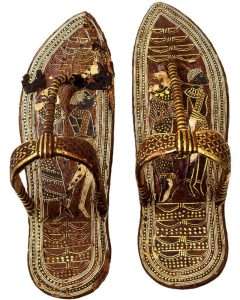
Golden slippers/sandals of Tut. 'Triangular' toes.'Rounded' heel? In excess of 'eighty' found. Also found in the New City of the Dazzling Aten. 'Turning the light' around?
And/or: ''The next stage of the journey brought the hero to the deepest point of the cycle {nadir}, there to be recognised by the father/creator {'demiurge'?}, to achieve sacred marriage with the goddess of inner beloved of the soul, and to enter upon his apotheosis or transformation....I was beginning to feel something or someone getting closer, and when i did, the sweep of emotion would be immense, a SWEETNESS that disolved for an instant all barriers, a remembrance of what or whom i was part of. And then it would deminish, as if to say, 'Not yet, not yet', and i would be left with a yearning and a promise. My apotheosis, i decided would have to wait awhile. Campbell, however, offered an alternative way of meeting this stage/cycle - it had to do with stealing the boon {axle?} for which one was questing {'trickster'?} - the elixir of life {'grail'?}, the fire of immortality, the key of knowledge. Campbell wrote: 'It is an expansion of consciousness and therewith of being' {Heb-Sed and/or 'horizon'?}...''[Page 91 ' A Mythic Life' / J. Houston].
Study program?
Laconian key?
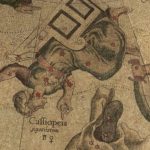
Folded or UNfolded?
But lustrous in the full-mooned night, sits Cassiopeia. Not numerous nor double-rowed The gems that deck her form.But like a key which through an inward-fastened Folding-door men thrust to knock aside the bolts,They shine in single zigzag row.
Continued: "'Cups' in Homeric astronomy {''cusps''?} generally represent two stars close together, and Priam's cup was designated as the pair of stars Alcor and Mizar in the handle of the Big Dipper...Double cup is a phrase used elsewhere in the Iliad for visible pairs of stars, such as those in Canis Major, i.e.,'all night long did Achilles grasp his double cup'..." [Homer's Secret Iliad'].
Question. Where, in the Egyptian sense of the word - would that ''double'' be represented?

Lower/higher. Fire/water. 'Heaven'/Earth. Which and why?
A working example: ''Jadelike purity {therefore 'mineral' link?} - has left a secret of freedom in the Lower world. Congeal the spirit in the lair of energy, and you'll sudenly see White snow flying in midsummer {solstice?}, the sun blazing in the water at midnight {'flood'?}....The function is all in the center, but the 'mechanism' is all in the two eyes. The two eyes are the handle of the stars, which manages Creation and operates yin and yang....The first two lines of the verse - wrap up the function of the golden flower. The next two lines refer to the interchange of 'sun' and 'moon'; ''midsummer'' stands for 'fire'....The ''white snow'' is yin without fire about to return to earth. ''Midnight'' is the water of water. The ''sun'' is the single yang in the center of 'water' on the verge of blazing and returning to heaven. The next two lines explain the function of the dipper handle....'' [Page 39/45 of the Verse headed 'The Secret of Freedom' from the book 'The Secret of the Golden Flower' / T. Cleary].

Crescent = cup?
Something extra: {from a different perspective?}: ''Beth {meaning ''House''} is the FIRST of the ''Double'' Letters, so called because each has two sounds, hard and soft. The 'hard' pronunciation is indicated by a dot in the letter, called Dagesh {meaning ''emphasis''}. Its numeral value is 2 {Beth}. ABOVE is the symbolic direction attributed to Beth. It is that which ''is above'' in the Hermetic doctrine. In modern psychology this is Self Consciousness. The colour corresponding to Beth is that of Mercury, a yellow of the same tint as that given to Aleph {First letter}, but somewhat stronger....The musical note is 'E'....."
Question. What represents ''below'' ? And/or 'Subconsciousness' ?
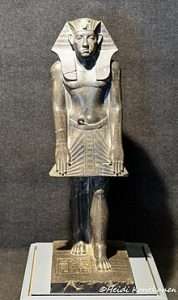
Fire or water in movement?

'E'-longa-ted?
A working example: ''When seeking to discover the mysteries of 'vivifying bodies' and obtaing 'life from lead', it is to the Egyptian sanctuary {'Abaton'?} of Venus that the alchemist Krates wends his way in the Arabic Book of Krates. There he is transported into the divine presence of the copper goddess herself and encounters the full force of her 'tincturing' power. Long after the Egyptian temples had closed, Islamic alchemists still knew that vivifying copper secrets are hidden in the dwellings of the shapeshifting goddess. Her name may have changed, but, true, to the spirit of ancient Egypt, hers is the 'FIERY' life circulating in 'bodies' and making their lustrous beauty shine...Life is movement...'' [Page 198 'Hathors Alchemy'].
Denderah to enlarge.
''In music a note that is exactly in tune is referred to as TRUE.''
And/or: {something hinted at}: "According to Egyptian tradition the sciences and arts which are utilised in house-building were 'revealed' to mankind by the god Thoth, who personifies the operations of 'intellect'. Mercury is the planetary equivalent. It has been used by other societies, and was once regarded as being a ''very occult'' secret.....i.e., 'The correct planetary attribution of the seven double letters' in the wisdom alphabet....This planet rules Gemini {Zain, i.e., seventh letter representing 'sound'} BY DAY {'hard'?}, and Virgo {Yod} BY NIGHT {'soft'?}...." [Pages 85/6 of the book by P. F. Case. Vol 1].
REMEMBER - ALL as a means …..? {in relation to that universal ''bit''}.

Thinking inside or outside of the 'box'? Boundaries/Dionysus links. "Cutting" to enlarge.
Hence: "Zain represented with a 'Sword', a cutting instrument, used in warfare; opposition, division, separation. ONE aspect of this division is the law of polarity, which finds physiological expression in sex. Another is the separation of human mental states into Self-consciousness and subconsciousness." Page 89.
Try ''polarity'' and/or its variations.

'Under ones belt'. An achievement of something?
''Numbers show us that there is a harmony, a necessary sequence of facts and factors. Multiplication is never situated BEFORE division, just as addition can never precede this division and situates itself between division and multiplication." [Page 107 'The Egyptian Miracle: An Introduction to the Wisdom of the Temple' / R. A. Schwaller de Lubicz].
And/or: ''The Hebrew 'alphabet' usually called 'Square Hebrew' - are not really Hebrew characters at all. They are of Babylonian origin, and were adopted by Hebrew scribes about the 5th century B.C. By some it is called the 'Flame Alphabet' because each of its signs is developed from the character YOD, which resembles a flame. The square shape is a hint to the 'occult' purpose of the alphabet. The square is the geometrical figure corresponding to the number 4, which symbolizes order and measurement." Page 83.
Y HVH ?
From a different perspective: "The whole thing suggested civilization and education and was of a quite different order to that of the goddess. This was also true of the 'giant' with a sword. He was barbaric, but not so unconventional and primitive as the Lady. She was the very essence of Celtic Art; the two gods owed something to the Classical World. Yet they were not Roman in character. They had a force and originality entirely of their own....People had been persuaded to dig this picture into the hill. It was on a cathedral scale. Only very strong 'religious' convictions could have ordered its construction....There had to be someone {other than the 'artist'} who was completely trained in the mathematics necessary for such work. This surely gives us a very different picture of conditions of life in Britain, perhaps two thousand years ago, than that to which our early training has lead us to expect. It is improbable, for instance, that you would have found the necessary qualifications at the court of King Alfred nearly a thousand years later. He had the greatest difficulty in getting people trained to read and write." [Pages 57/66 'GogMagog' / T. Lethbridge].
Try ''re-ligion''.
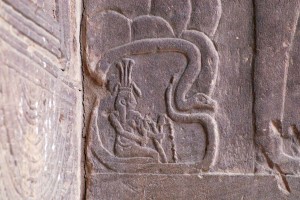 AND..."We find that we are approaching a lake. We are walking on grass now and on a gentle slope downwards. The lake is before us in the very early morning light BEFORE the sun rises but a greenish tinge in the sky. We are aware of the dark indigo purple {'Saturn'?} of the lake before us, and approaching us over the lake, very silently, we see something moving in the darkness. It is a great barge. There is a figure in the back of it, an angelic figure holding two cups {Aquarius link?} and pouring water from one cup to the other. We are aware that this water is the water of life; and that this great figure is one who guards the boundary {'cusp'} between life and death. And that when a new soul is 'incarnated' {'Smith' or 'Jones'?} the waters of life {'sweet'?} are poured into that soul as from one cup to another. We are invited into the barge, and when we are all safely in, it silently glides across the dark waters {Dead Sea?}. We become aware of a bright morning star shinning in the sky to our right, and to our left the blazing tip of the dawn sun begins to rise over the horizon. We pass onward and see before us a green shoreline. The barge grates onto the shingle of the shore and the 'Angel' with the Two Cups stands protectively to one side to supervise our disembarkation. The sky is getting lighter now and our path is more easily seen. We find we are walking over green downland. We seem to be on ancient trackway {Hoar
AND..."We find that we are approaching a lake. We are walking on grass now and on a gentle slope downwards. The lake is before us in the very early morning light BEFORE the sun rises but a greenish tinge in the sky. We are aware of the dark indigo purple {'Saturn'?} of the lake before us, and approaching us over the lake, very silently, we see something moving in the darkness. It is a great barge. There is a figure in the back of it, an angelic figure holding two cups {Aquarius link?} and pouring water from one cup to the other. We are aware that this water is the water of life; and that this great figure is one who guards the boundary {'cusp'} between life and death. And that when a new soul is 'incarnated' {'Smith' or 'Jones'?} the waters of life {'sweet'?} are poured into that soul as from one cup to another. We are invited into the barge, and when we are all safely in, it silently glides across the dark waters {Dead Sea?}. We become aware of a bright morning star shinning in the sky to our right, and to our left the blazing tip of the dawn sun begins to rise over the horizon. We pass onward and see before us a green shoreline. The barge grates onto the shingle of the shore and the 'Angel' with the Two Cups stands protectively to one side to supervise our disembarkation. The sky is getting lighter now and our path is more easily seen. We find we are walking over green downland. We seem to be on ancient trackway {Hoar  Way?}. We press on for what seems some time over the open land and then, ahead of us, we are aware, in the middle distance, of what seems to be a roadway crossing our path {A 'Gap'?}. Unlike the green trackway it seems to be made of stone, of cobbles {'clogs'?}, or even tarmac {S/E 'corner' of 'swamp' at Oak Island?}. And in our path we see there is a tall tower at the crossroads...There is a spiral stairway within. Indeed, the tower seems to be nothing but spiral stairway going up and up, with windows. If we look out of the windows, to one way, to our right as we have been proceeding, we can see in the far distance along the roadway, a tall conical hill {'cairn'?}. Looking the other way, to the left, there is a great city in the distance." ['Tarot Magic: The Treasure House of Images' / G. Knight]. Continued elsewhere. Try ''cup/s'' and/or ''Tor'' and/or ''city'' {if only in relation to 'rural'}.
Way?}. We press on for what seems some time over the open land and then, ahead of us, we are aware, in the middle distance, of what seems to be a roadway crossing our path {A 'Gap'?}. Unlike the green trackway it seems to be made of stone, of cobbles {'clogs'?}, or even tarmac {S/E 'corner' of 'swamp' at Oak Island?}. And in our path we see there is a tall tower at the crossroads...There is a spiral stairway within. Indeed, the tower seems to be nothing but spiral stairway going up and up, with windows. If we look out of the windows, to one way, to our right as we have been proceeding, we can see in the far distance along the roadway, a tall conical hill {'cairn'?}. Looking the other way, to the left, there is a great city in the distance." ['Tarot Magic: The Treasure House of Images' / G. Knight]. Continued elsewhere. Try ''cup/s'' and/or ''Tor'' and/or ''city'' {if only in relation to 'rural'}.
Question. Heliacal rising? If so, what does it represent? {Regardless of where {or how} those 'images' are arrived at}.

Lambing Chair.
And/or: Tower - Temple - Castle. Individually or collectively? What represents which and why?
Question 2. Egyptian equivalent = Hatshepsut's journey to the Land of Punt?
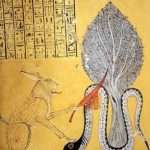 And/or: "The word 'temple' comes from the prehistoric Indo-European root 'tem', - which means ''to cut'' . A temple is a sacred place, a place of retreat that is literally 'cut out' from busy demands of everyday existence. The Greek word temenos - the sacred precinct in which a sanctuary is located - originates from the same root. The Latin word religio means to ''relink'' {i.e., to the universe} - back to the mysteries depths of our own being.....As Henry Corbin notes {'Temple and Contemplation'} - the word templum originally meant a vast space, open on all sides - from which one could survey the whole surrounding landscape as far as the horizon. This is what is meant to contemplate - to set ones sights on...." [Page 388 'Alexandria' Vol 3. D. Fideler].
And/or: "The word 'temple' comes from the prehistoric Indo-European root 'tem', - which means ''to cut'' . A temple is a sacred place, a place of retreat that is literally 'cut out' from busy demands of everyday existence. The Greek word temenos - the sacred precinct in which a sanctuary is located - originates from the same root. The Latin word religio means to ''relink'' {i.e., to the universe} - back to the mysteries depths of our own being.....As Henry Corbin notes {'Temple and Contemplation'} - the word templum originally meant a vast space, open on all sides - from which one could survey the whole surrounding landscape as far as the horizon. This is what is meant to contemplate - to set ones sights on...." [Page 388 'Alexandria' Vol 3. D. Fideler].
'White Temple' at Karnak?
''Scone'' to enlarge.
Side note: ''These chairs were generally believed to be used by farmers whilst waiting in draughty barns for sheep to lamb, and also to keep sickly lambs under the seat to keep them warm.''
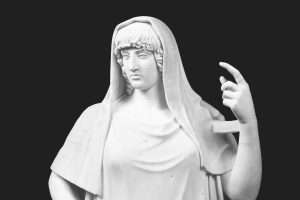
Guardian of the hearth. N/W?
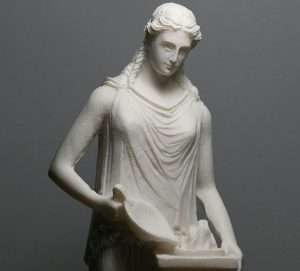
Kitchen maid ?
''The historic lambing chair is an example of regional vernacular furniture prevalent in the Lancashire and Yorkshire Dales in England, c. 1750–1850. The name derived from the prevalence of sheep farming in the region where the chair was used by shepherds at lambing time.''
''LAMBING chairs were once a common sight in farmhouse kitchens in the Yorkshire Dales. When ewes were giving birth, shepherds could sit in them all night, dozing by the fire and protected from draughts by the chairs wings and hood. A shepherd's chair is a type of armchair normally fabricated entirely out of solid wood. Most shepherd's chairs do not have upholstery. Sometimes, people call this type of seating a lambing chair.''
Sheep decans?
And/or: The English word "cathedra", plural cathedrae, comes from the Latin word for "armchair", itself derived from the Greek (καθέδρα). After the 4th century, the term's Roman connotations of authority reserved for the Emperor were adopted by bishops. It is closely related to the etymology of the word chair.
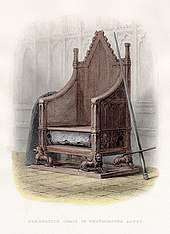
The Stone of Scone. Made of limestone.
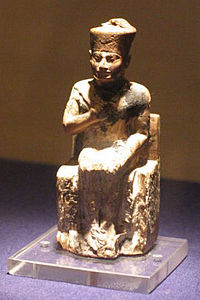 Continued: ''There's a problem with Clive's opinion of the ending of the Picts {by a takeover of the Vikings only}. And its this: i've just driven down from Aberdeen - and that name comes from the Pictish word 'Aber' which means 'river mouth'. Then i went through Cooper which is the Pictish meaning for a 'confluence of a river'. Then i hit Perth., which is from the Pictish, 'wood or grove'. Now i'm just reaching Scone - which is an amalgamation of Gaelic and Pict - meaning to ''cut or cutting'' - so if the Vikings had wiped out mainland Scotland i should be riding through places with Viking origin names - but i didn't...'' [ 'Mythic Britain: Lost Tribe of Scotland' / Smithsonian].
Continued: ''There's a problem with Clive's opinion of the ending of the Picts {by a takeover of the Vikings only}. And its this: i've just driven down from Aberdeen - and that name comes from the Pictish word 'Aber' which means 'river mouth'. Then i went through Cooper which is the Pictish meaning for a 'confluence of a river'. Then i hit Perth., which is from the Pictish, 'wood or grove'. Now i'm just reaching Scone - which is an amalgamation of Gaelic and Pict - meaning to ''cut or cutting'' - so if the Vikings had wiped out mainland Scotland i should be riding through places with Viking origin names - but i didn't...'' [ 'Mythic Britain: Lost Tribe of Scotland' / Smithsonian].
'Middle Earth' {The Hobbit}.
And/or: Aberdeen is known as the granite or 'grey' city. [Wiki].
Side note: ''Foundation stone of Balmoral laid down by the Queen.'' ['The Chase'].
| Zodiac Sign | Archdemon Name | Meaning of Name |
|---|---|---|
| Cancer | Phahkaiel | "Flask of God" |
| Leo | Serattiel | "Cutting of God" |
| Virgo | Sehaliel | "Profit of God" |
| Libra | Hadakiel | "Thorn of God" |
 ''Balmoral Castle (/bælˈmɒrəl/) is a large estate house in Aberdeenshire, Scotland, owned by Queen Elizabeth II.
''Balmoral Castle (/bælˈmɒrəl/) is a large estate house in Aberdeenshire, Scotland, owned by Queen Elizabeth II.
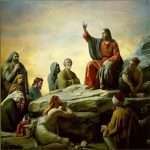
Seated on what?
It is near the village of Crathie, 9 miles (14 kilometres) west of Ballater and 50 miles (80 kilometres) west of Aberdeen.[2]
Recorded first as Bouchmorale in 1451, the first element in the name Balmoral is the Scottish Gaelic both meaning "a hut".[3] The second part of the name is uncertain,[3] but may conserve a Pictish formation from *mor meaning "large", and *ial, "open space" (c.f. Welsh mawr-ial).''
Meritaten / swell / mound to enlarge.
Ophel?
Sunshades?
Continued..."When Homer introduces groups of men of lower rank, he commonly singles out one of them for special emphasis, and that man represents the brightest star in his group.
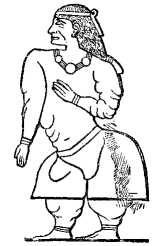
'Fat' of the land?
By applying this rule to the band of Trojans from Hydra, killed by Patroclus, we can see that Perimus, son of Megas, is indicated as the brightest of a group of three stars and is almost half a magnitude brighter than his immediate 'comrades'. In a second flurry of nine 'killings' in Book 16, Patroclus 'laid low, one after the other, Erymas, Amphoterus, Epaltes; Tlpolemus, son of Damastor, Echius and Pyris; Ipheus, Euippus and Polymelus, son of Argeas'...SON OF, is not the only phrase attached to warriors to denote a brighter star. In Book 11, when Odysseus kills or wounds warriors representing stars in Serpens Caput, Homer describes Deiopites as ''noble'' and his star is the brightest, and in the correct place, in the sequence of the attack..." ['Homer's Secret Iliad'].
Nobles Tombs in Thebes?
A working example: ''John Sholto Douglas, 9th Marquess of Queensberry (20 July 1844 – 31 January 1900), was a British nobleman...''
Question. ''16'' in relation to 'Son of' and ''11'' in relation to 'Noble' ? ALL in relation to ''warriors'' {i.e., 'to struggle with'}. Try ''noble'' {and/or 'lord'].

He is the king who introduced the royal title Sa-Rê (meaning “Son of Ra”) and the first to connect his cartouche name with the sun god Ra.

Pearls. Upside down figure? "Not out but through?" 'Hang/hung' to enlarge.
Analogy?...A true 'Son' possesses his 'fathers' essence and secret, both in his exterior appearance and in his inner being. The Prophet explains this secret as, ...' a special knowledge like a hidden treasure that only those who know the Essence of 'god' can find. Yet when the mystery is revealed, no one who is conscious and sincere can deny it." [Chapter 5, 'The Secret of Secrets' by Al - Jilani].
Old/New Testament equivalent. "...and in the parable of ''poor Lazarus'' recounted by Christ himself, ''poor Lazarus'' finds himself at a place, or in a state, which is described as ''Abrahams bosom.'' [Luke xvi 19-31].
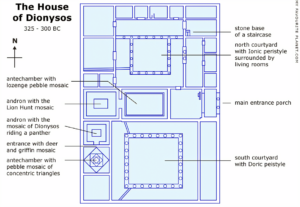
"She carries a small crucifix of pearl, which is imbued with great significance, for it is said that it was 'this very day wrought between the young King and his Bride.' We say no more than to provide the hint that the crucifix is the paramount symbol of vicarious sacrifice and that pearl represents by its appearance a solidification of the life forces. This is sometimes referred to as 'gluten of the white eagle', more familiar to 19th century psychical research in the form of 'ectoplasm', or more subtle etheric forms of it." [Extract taken from the book 'The Rose Cross and the Goddess'. Mentioned elsewhere].
''Solidification'' in relation to 'crystallization' - anything?
Side note: Andron: an apartment for men, especially one for banqueting. (in an ancient Roman house) a passage between two peristyles..A special room called the andron was used for men and their male guests. Men lounged on couches and were served an evening meal while they discussed things like politics. They would also recite poetry or riddles. There was even a separate door to the andron so men and women would not run into one another....
Question. If animals {lions/panther} represent males. What represents the 'females'?
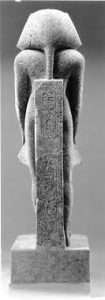
"Behind Will, stands desire."
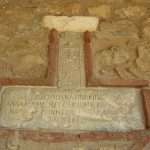 Continued: "The mathematically precise arrangement of a crystal evokes in us the intuitive feeling that even so-called 'dead' matter, there is a spiritual ordering principle at work. Thus the crystal often symbolically stands for the union of extreme opposites - of matter and spirit." ['Man and his Symbols'].
Continued: "The mathematically precise arrangement of a crystal evokes in us the intuitive feeling that even so-called 'dead' matter, there is a spiritual ordering principle at work. Thus the crystal often symbolically stands for the union of extreme opposites - of matter and spirit." ['Man and his Symbols'].
Question. Crystal Skulls link?
And/or: Saturn, as you know, is the binding, crystallizing vibration. The pair of opposites assigned to it is Dominion and Slavery, because our expression of this 'vibration' {i.e., in the ''energy'' sense of the word, i.e., recall J. Campbell's quote}, either frees or limits us, according to the point of view that we take. " [Page 51 of the book by P. F. Case. Vol 1].
![They saw in this image the meeting of Sun and Moon. In Alchemy, the union of Sun and Moon – – expressed in such diverse yet related symbols as the meeting in sexual congress of King and Queen [i.e., sacred marriage ], or in the androgyne male – female figure beloved of 16th century engravers – – is an important stage in the production of the Secret Stone, the discovery of which was the aim of the alchemists. [Prologue,. The Zelator' by M. Hedsel].](https://esotericbasics.co.uk/wp-content/uploads/alchemy-marriage1.jpg)
A representation of something...outside of the obvious....''They saw in this image the meeting of Sun and Moon. In Alchemy, the union of 'Sun' and 'Moon'; expressed in such diverse yet related symbols as the meeting in sexual congress of King and Queen [i.e., sacred marriage ], or in the androgyne male and female figure beloved of 16th century engravers, is an important stage in the 'production' of the Secret Stone, the discovery of which was the aim of the alchemists.'' [Prologue,. The Zelator by M. Hedsel].
...It is as if man and woman embraced and a conception took place." ['Sacred marriage' link, and/or 'Song of Songs]...
...Having renounced all {desire-prompted} action with his mind, the Inner Ruler {''Teacher'' link, i.e.,relative to higher/lower. Explained within}, sits blissfully in the 'nine' gated city of the body, {number symbolism, indicative of that still in the unknown/dormant phase. Something yet 'to be' realized. On the verge {boundary} line of - a potential {by way of an understanding- that is on the brink of becoming a 'known' quantity} - neither acting nor causing to act...

A leap across a gap?
...For the center within is only illusory when considered as an independent self, a monad separate from all the others. In reality the ''point'' within is a window, a point of view through which the 'Eternal One' as subject looks out upon itself , as object. {Link to objectivity, benefit of, in relation to 'higher' / 'lower'. By way of, the ''minds eye''. Explained within. Commonly known; in its universal context; as - the 'guardian of the gate'}. Just as a window, empty in itself, is yet a focus through which all the pervading sunlight can illuminate the world of objects, {i.e.,to reflect on something}, so is the self a focus through which can shine the Light of the One Consciousness, illuminating the objective world, which is the other aspect of the Great Atman or Universal 'Mind'{ Mahat Atman}." [Chapter 5, 'The Yoga of the Bhagavat Gita'. Emphasis, this readers].
Recall the ''help'' section.
Side note: The English word 'focus' comes from the Latin for 'fireplace'. ['The Chase' / ITV / 31.1.22].
Hestia to enlarge.
'On Having No Head: Zen and the Rediscovery of the Obvious' / D. E. Harding.
And/or: "Egyptian myth also indicates that at one point the Eye of Horus is 'lost'. Certain texts refer to a search like that for the 'body' of Osiris, but the eye is found ….." [Pare 9 'The Death of Gods in Ancient Egypt' / J. Sellers].
A {simpler?} attempt of the same..."Conscience thus offers intelligence as vast a world of inner experience as does the empirical world for outer experience. Intelligence can therefore develop itself and grow in two directions simultaneously - in the direction of the outer empirical world, thanks to the senses, and in that of the inner empirical world, thanks to conscience. Conscience is the door - that sole legitimate and healthy one - to a world at least as vast, and much more profound, than the world that we perceive with the senses. And it is the decision of intelligence to become the 'servant' of conscience [ancilla conscientiae] - just as in the middle ages philosophy considered itself the 'servant' of theology - [ancilla theologia] - which opens this door. The leading role of conscience in the passage from the ''surface world'' to the ''depth world'' has long been known of in the tradition. It was dramatised and concretised by speaking of the ''guardian of the threshold,'' and of the 'meeting' with him..."[Extract from the book by Tomberg]. Try ''sword''.
One could therefore say... the doorway... between that which is unknown [unconscious?] to something known [conscious?] OR becoming known?
Sumerian equivalent; Gilgamesh meeting the same in the forest of cedars. Question. Why cedar?
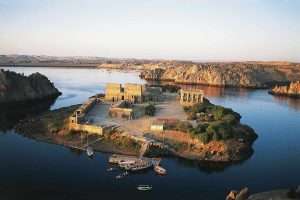
Sycamore and Thorn. N-S.

Isle of 'glass'.
"...the 'nails' of objectivity - which give conscience to thought." The symbol of which is the Crown of Thorns, i.e.,"The 'thorns' of the crown center function as the 'nails' of objectivity..." [Taken from 'letter 5' from within the book by Tomberg].
'On Having No Head: Zen and the Rediscovery of the Obvious' / D. E. Harding.
"...for everything that takes place in subjective intimacy will one day become objective reality. It is the 'magical' law of history that the subjective at some time becomes objective; that the aspirations, thoughts and feelings of today become the events of history tomorrow." [Extract from the book by Tomberg]. Link to the word ''hindsight''. Benefit of, i.e.,understanding the past, gives us an [idea?] as to who and where we are in the present: 'past' together with 'present' = idea of future? Think on it relative to the contents of a subject - together with the same word as mentioned in Part 1.
Understanding the above, gives clues as to the final resting place of those that represent the Giza 'complex'. Not just the obvious three. 'Horizontal' as well as 'vertical', i.e.,'valley' {quarry?} in relation to 'plateau'. Put [amongst other keys] ''subjective'' in the search box. Then try ''teacher.''

Ennerdale Valley as seen from the adjacent Great Gable. AND/OR: "One should always have a definite objective. In a walk, as in life, it is so much more satisfying to reach a target by personel effort than to wander aimlessly. An objective is an ambition; and life without ambition is aimless wandering." {'Wainwright: Coast to Coast' / S1 EP5}.

You may not have heard of Keld, in North Yorkshire, but it serves as one of the Nation’s most significant and important crossroads.
Go there, though, and you’ll see no roundabouts, traffic lights or service stations. In fact you wouldn’t see much sign of human activity at all.
This is because Keld is a tiny village tucked up at the top of Swaledale in the North Yorkshire Dales.
It’s significant because it’s the crossing point between the two most important long distance walking trails in northern England. The Pennine Way and the Coast-to-Coast Path.
The 260 odd mile Pennine Way is the backbone of northern England from Edale in the Peak District up through the Pennine hills to just over the Scottish border.
The Coast-to-Coast, on the other hand, crosses the North from St Bees in the West to Robin Hood’s Way in the East, passing through the Lake District, Yorkshire Dales and North York Moors for good measure.
Analogy of same..." the depths [valleys] of human folly rather than the heights {'cedar'?} of divine light." [note 3237 of the Quran. Translater...Abdullah Yusuf Ali].
Try ''Sneferu''.
Sufi equivalent..."The 'Divine Speech' guides through its ''signs'' [ayat] or verses, just as the cosmos - which is also the speech of god, articulated within the ''Breath of the all merciful'' - gives news of 'god' through its signs, which are the phenomena of nature. The revealed, written speech can be more readily understood than the revealed, Cosmic speech. It provides the key through which ''opening''[explained elsewhere], can take place. The opening of the door to comprehension of the signs within the macrocosm and the microcosm, the universe around us, and within us." [Introduction, 'The Sufi Path of Knowledge'].
 The author of 'The Cosmic Doctrine' defines that 'guardian' as the 'Ring-Pass-Not'. Representational of. That mental faculty that we all use [without; in the main; being aware of it] to define objective from subjective when attempting to understanding something; anything. [Chapter two, same book].
The author of 'The Cosmic Doctrine' defines that 'guardian' as the 'Ring-Pass-Not'. Representational of. That mental faculty that we all use [without; in the main; being aware of it] to define objective from subjective when attempting to understanding something; anything. [Chapter two, same book].
'Sword' at the Garden of Eden?
''Every good sword is given a name'' {Needle?}. [Game of Thrones. Episode 2. Series 1].
REFRESHER: "...for everything that takes place in subjective intimacy will one day become objective reality. It is the 'magical' law of history that the subjective at some time becomes objective; that the aspirations, thoughts and feelings of today become the events of history tomorrow." [Extract from the book by Tomberg]. Link to the word ''hindsight''. Benefit of, i.e.,understanding the past, gives us an [idea?] as to who we are in the present: 'past' together with 'present' = idea of future? Think on it relative to the contents of a subject - together with the same word as mentioned in Part 1.
'On Having No Head: Zen and the Rediscovery of the Obvious' / D. E. Harding.
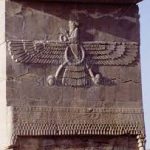
Observer. An objective one?

A leap across a gap? A leap of faith or an intuitive one?
''The best day of my life - my rebirth day, so to speak - was when I found I had no head. This is not a literally gambit, a witticism designed to arouse interest at any cost. I mean it in all seriousness. I have no head. It was when I was 33 {'thirtythree'} that I made the discovery, though it certainly came out of the blue, it did so in response to an urgent inquiry - I had for several months been absorbed in the question: What am I?....What actually happened was something absurdly simple and unspectacular: just for the moment I stopped thinking. Reason and imagination and all mental chatter died down. For once words really failed me. I forgot my name, my humanness, my thingness, ALL that could be called me or mine. Past and future dropped away. It was if I been born in that instant, brand new, mindless, innocent of all memories, there existed only the Now, that present moment that was clearly given in it. To look was enough....It took me no time at all to notice that this nothing, this hole where a head should have been was no ordinary vacancy {void?} no mere nothing. On the contrary, it was very much occupied...." [Chapter one entitled 'The True Seeing' from the book 'On Having No Head'].
''Web''?
 A working example {the first original one?}: "I consisted of all that, so to speak. I consisted of my own history, and I felt with great certainty: this is what I am. 'I am this bundle of what has been, and what has been accomplished.' This experience gave me a feeling of extreme poverty, but at the same time of great fullness. There was no longer anything I wanted or desired. I existed in an objective form; I was what I had been and lived." [Page 321-322 'Memories, Dreams and Reflections. C. G. Jung'].
A working example {the first original one?}: "I consisted of all that, so to speak. I consisted of my own history, and I felt with great certainty: this is what I am. 'I am this bundle of what has been, and what has been accomplished.' This experience gave me a feeling of extreme poverty, but at the same time of great fullness. There was no longer anything I wanted or desired. I existed in an objective form; I was what I had been and lived." [Page 321-322 'Memories, Dreams and Reflections. C. G. Jung'].
'On Having No Head: Zen and the Rediscovery of the Obvious' / D. E. Harding.
"We shall show them our signs upon the horizons and in themselves, until it is clear to them that this is the truth." [Quran 41:53].
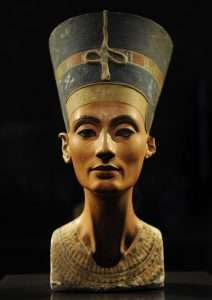
'Stamp of the feminine'. Real or symbolic?
Represented [in part] in its 'physical' form as a 'Lily', i.e.,"as bearer of symbolic meaning". Chapter two. 'The Future of the Ancient World.'/ J. Naydler.
Hence the reason for 'The Lily' to be the first emblem spoken on, in the 'prologue', to non other than the Hebrew Zohar. [Unabridged edition by Rav Berg]. Think about it, in relation to 'plant' symbolism, in relation to 'herbal' remedies, in relation to 'lower half', [representational of], in relation to an individuals 'health'. Their ongoing positive 'health', relative to an 'understanding'.
Especially the 'Madonna' lily, an image of which was found near Knossos, in ancient Crete. Represented with three stalks, on a dark background, [same chapter / J. Naydler]. Knock, knock...see anything? Or should that be - ''knock three times'' - Hear anything?
 Analogy of same..."Who is this ''First and Chief being'' referred to in the Shetaut Aset? It refers to the transcendental, absolute Supreme Being, God. But how is this supreme being 'to be' discovered? The 'divine' must be understood through philosophical training. This requires a process by which the aspirant first listens {or reads?} to the teaching and then reflects on the mystical meaning contained within it, i.e.,as a means by which the intellect can be gradually purified and made subtle {Stonehenge equivalent: Sarsen stones in relation to those 'blue' ones. Representational of. Enlarged elsewhere}
Analogy of same..."Who is this ''First and Chief being'' referred to in the Shetaut Aset? It refers to the transcendental, absolute Supreme Being, God. But how is this supreme being 'to be' discovered? The 'divine' must be understood through philosophical training. This requires a process by which the aspirant first listens {or reads?} to the teaching and then reflects on the mystical meaning contained within it, i.e.,as a means by which the intellect can be gradually purified and made subtle {Stonehenge equivalent: Sarsen stones in relation to those 'blue' ones. Representational of. Enlarged elsewhere}

Wisdom found within it?
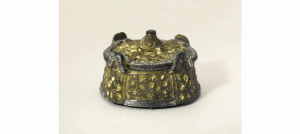
The island developed a wholly unique set of female jewelry, most epitomized in the box brooch (Swedish: dosformat spänne). This brooch style, worn just under the chin to centrally clasp a cloak, was produced throughout almost the entirety of the Viking Age. It reflected the various evolutions of Viking art throughout the time period, but essentially retained the same basic shape: a large round drum, hollow, with a pin on its backside {'iron'?}. The uniqueness of these objects to the island cannot be stressed enough; of the approximately 850 brooches found, less than 30 (or roughly three percent) have been found outside of Gotland....Thus, in the very beginning of its life, the box brooch would have been linked with faraway places, a concept that may have been significant in the Viking Age Scandinavian mind. Indeed, it has been suggested that this may have been a motivation for the first Viking raids: objects from foreign lands carried with them connotations of power and status, portraying elite individuals as worldly and well-connected....In looking at the workshops themselves, we find further evidence for a social significance ascribed to the brooches at their ‘birth’. For instance, one such site is Stora Karlsö, a small and sparsely settled island just off the coast of Gotland, which contained molds for box brooches, but also molds for mainland style brooches as well. This indicates an awareness of outside styles by Gotlandic craftsmen. However, mainland-style brooches are almost never found on Gotland itself. Although they may have been produced there, it is likely they were exported. What this means, then, is a conscious choice or preference by Gotlandic individuals to wear their own native style..We have established that a contractual, commission-based system would have been in place for the production of box brooches; so then, who were the so-called clients? Who was doing the commissioning and wearing these brooches? The answer to this can most likely be found in graves, and more specifically, the graves of girls as young as five years old. It is at this age when young girls seem to have been accorded their own individual graves, rather than being buried with family members. This could imply that the owning of a brooch marked a transition in a girl’s life, a sort of coming-of-age ritual."
... so that it might partake in the wondrous 'resurrection' which the goddess imparts {anima link?} to all those who 'ponders over sacred matters and seeks therein for hidden truth'. This process is accomplished by acquiring the 'knowledge which the goddess invites us to seek after, as being near and dwelling continually with her' {get it?}. This implies that spiritual studies must be continuous if they are to be effective, {as it is in ANY subject}...And when you succeed in maintaining a constant flow of thought towards the 'divine' you will achieve the third stem of the Yoga of wisdom..." [Extract from the book 'Mysteries of Isis' by Muata Ashby. All emphasis, this readers]. Recall what the ''three'' of anything represents - before those first impressions suggest something else.
''Third stem'' in relation to 'lily' and 'knock three times'?

Made of scented sandalwood. Hollow/void to enlarge. Daath?
And/or the triple {leg/upright} of the Dolmen {i.e.,altar stone}.
And/or: ''The story of Adam fasting in the Jordan with water to 'his chin' is found in the early mediaeval 'Life of Adam and Eve' on which Adam; when fasting; received a pardon. But no source is known for the dispensation of wisdom to Moses by means of the three Dominical rods {i.e., the rods of Sunday}. It may be Essene tradition, for Sunday was the Essenes great day, and recalls a reference to three rowan rods in one of the Iolo manuscripts....and learned all kinds of knowledge and science written on them...The end of the poem from stanza 27 onwards, is a separate piece...." [Page 156 'The White Goddess' / R. Graves].
What does the Rowan represent?
N.B. ''The Mountain Ash is sometimes a reference to the Rowan.'' ['The Chase'].
''The symbol of the 'lower' will is the altar''. {East?}.
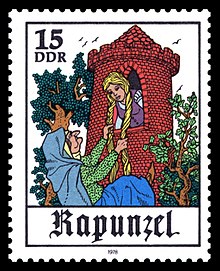
Side note: Thanks to the large number of excavated brooches, we have a clear picture of their deposition norms, which broadly fall into two categories: burials and hoards. In the former, the brooches are nearly always placed right under the chin, where they likely would have been worn in life, and often arranged with various combinations of several other native Gotlandic jewelry types: animal-head brooches, worn in pairs at either shoulder, and two types of pendants, fish-head, and sieve-and-ladle. This likely represents the idealized way in which a Gotlandic woman was to present herself. Having such a standardized style would have served to reinforce group identity and belonging....
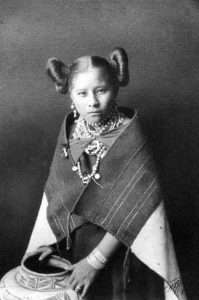
"The impressive look is called the “squash blossom whorl”, a traditional hairstyle for unmarried girls. At the onset of puberty, historically young girls went through challenging initiation ceremonies, marked by a day of grinding corn at the paternal grandmother’s house. She would receive a new name and assume the squash blossom hairstyle, the sign of marriageability and fertility." Emergence to enlarge.
There is, however, also a remarkable amount of individual agency displayed in the graves when looking specifically at the box brooches. We can refer, in particular, back to the idea of heirloom brooches, passed from one generation to the next. A brooch that is far older than the grave in which it appears likely represents an active choice to take that item out of circulation, rather than simply following established custom. Exactly why this choice was made is nearly impossible to know.

The back of a Box-brooch. Figure of 'eight'?
Could it be that there was too much wear and tear on the object, and it was time to retire it? Did the individual have no one to pass it on to? Was it an item that was supposed to go with this individual to the afterlife? Or was it simply out of fashion? Nevertheless, it was indeed a conscious act. Brooches found outside the bounded area of Gotland, however, may in some cases be easier to interpret. Though box brooches found outside of the island are not common, those examples we do know of have often been found in quite evocative contexts, highly distinct from those on Gotland. One such example is a box brooch that was found in a late tenth-century grave associated with the ring fortress at Fyrkat, in Denmark. This individual was likely a völva, a type of religious ritual specialist. She was found with a brooch at least 50 years old at the time of deposition, that had been transformed into a small cup and likely used in performative ritual. We might interpret this as not only a tying of her identity to Gotland but also perhaps a supernatural appeal to an ancestor, as suggested both by the age of the brooch and the use of it in a ritualistic context.

Smelling salts?
A working example: {i.e., in respect of a mind set}: ''Each tree or plant for the Druids, had numerous spiritual and magical associations with it: The Birch = New beginnings. The Rowan = Protection. The Willow = Intuition. The Ash = Interconnection. The Oak = Strength. The Holly = Balance. The Hazel = Wisdom. The Apple = Abundance. The Yew = Transformation.
So to seek the above energies that the tree represented to be applied into their own life's, a Druid if he was seeking {say} 'abundance' would eat apples, use a wand {in ritual} made from apple, meditate under an apple tree, etc etc.'' [Page 68 'Idiots Guide to Paganism' / C. McColman].
Analogy {i.e.,as seen from a different perspective}: "You need five lights because traditionary you always have one in the center of the altar to represent the Light of the Universe, or the spark of god at the center of your working, and one candle at each point of the compass." [ 'Magic in the Aquarian Age' / Marian Green].
Compass of the Heart?

Metal of the mind.
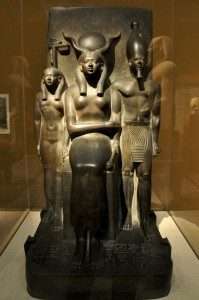
Two parts or three?
A working example: "From this are and do come admirable adaptions whereof the means is here in this. Hence i am called Hermes Trismegist, having the three parts of the philosophy of the whole world..." ['Emerald Tablet'].
Follow the title of the book to 'see' the parts {three?} within those universal ones {whole?}. 'Transcendent third' link? Therefore 'dimensions' {i.e., inner/outer} of the sarcophagus within the 'higher' chamber of the Gt. Pyramid. Think on it in relation to 'lower'. Getting it?
If so, what would 'lower' be represented by within that same structure?
Something to ponder:"...as being near and dwelling continually with her." But now seen from a different perspective {angle?}... "They should pray twice daily towards Jerusalem, and seek peace through submission to the divine - a state encapsulated by the Arabic word 'Islam'. Only then would they begin to appreciate Gods true nature: a spiritual presence ''nearer to man than his jugular vein." Enlarged elsewhere.
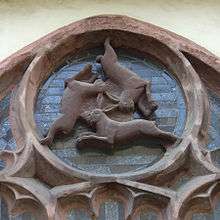
Hare in top left corner.
The author of the 'Secret History of the World' gives a good account of that plants [lily] 'history'. In the 'good old days' it was probably used as a 'quick fix' to understand something that these days can be be done by objective reasoning. Hence that authors 'history' of that same development throughout the ages in relation to this subject. But Mr 'Black' if only for this reader, has still not got to the 'crux' of the subject. He uses 'mythology' in the same vein as Plato and Gurdjieff do with their own 'specialist' tools, [explained elsewhere]. Taking the reader on a journey, as explained by himself..."But above all, and this is the point i want to emphasize, i am asking readers to approach this text in a new way...to see it as an imaginative exercise." [introduction].
 Side note. The author of 'Dionysos: Archetypal Image of Indestructible Life' uses his own 'specialist tools' of intent - constantly teasing the reader throughout to define the difference between 'vision' and 'epiphany'. The 'Lily' plant in the old days more relative to 'vision'. But in the modern day more relevant to the word 'epiphany'. The common factor, however, between the two - regardless of time-lapse = ''archetype''.
Side note. The author of 'Dionysos: Archetypal Image of Indestructible Life' uses his own 'specialist tools' of intent - constantly teasing the reader throughout to define the difference between 'vision' and 'epiphany'. The 'Lily' plant in the old days more relative to 'vision'. But in the modern day more relevant to the word 'epiphany'. The common factor, however, between the two - regardless of time-lapse = ''archetype''.
REFRESHER: "....the words 'idea', 'wisdom' and 'vision' ALL originate from the common Indo-European root which means ''to see''. An idea is an insight, an inner flash of illumination that can result in 'wisdom'." [From the book 'Alexandria' / Vol 3 ].
Side note: King Cake = ''epiphany'' = 3 wise men link. Coincidence? ['Tipping Point' / ITV / 3.4.20].
King Aha? {i.e., 1st Dynasty Egypt}.
Understanding that 'framework' that this subject is indicative of, regardless of author, by way of those essential keys [or signs]... gives the reader that broader view. That deeper view. Deeper in the sense of its purported relevance to each individual. Nothing more. In other words understand those 'keys' in relation to what else is being said, [imaginary {and/or ''visionary''} or otherwise].

Three Hares. Many speculate on its symbolism. Ears attached - representing a 'connectedness' of something. Recall those ''ear'' tablets in the Nile Delta. Egyptian equivalent. Try ''Sais''. Then relate that answer to the ''hare,'' i.e.,what it represents.
As an example...think about what the word 'Lily' represents, regardless of its 'origins' [explained above], together with other key words like 'tree' , 'hare' and 'swan', relative to an understanding. From 'plant / tree' to 'animal' to man, as a representation of that 'development' . Of which the word 'Horus' could be a representation of that beginning and end result,[ if only in the Egyptian culture]. 'See' anything? If not learn more, by study, reason, and objective analysis. Find those keys to decipher the whole subject.
"For everyone who asks receives, and he who seeks finds, and to him who knocks it will be opened." New Testament.
In other words see it as an objective exercise; as one does in ANY subject; [especially at the outset], rather than an ''imaginative one.'' [This readers opinion only. Regardless even if Mr Black is using the word ''imaginative'' in the same vein as Mr H. Corbin does. [Explained elsewhere]. BE objective, more than 'imaginative'. Chose the right word. Then use it. Apply it. [i.e.,''In the beginning was the word, and the word was with 'god', and the word was 'god''. Its true meaning. Explained / enlarged elsewhere]. Relative to a ''foundation.'' That same foundation that can then, be 'built' on.
'Mans Search for Meaning' / Viktor Frankl.
"...the 'nails' of objectivity - which give conscience to thought." The symbol of which is the Crown of Thorns, i.e.,"The 'thorns' of the crown center function as the 'nails' of objectivity..." [Taken from 'letter 5' from within the book by Tomberg].
'On Having No Head: Zen and the Rediscovery of the Obvious' / D. E. Harding.
Understanding the above,i.e.,''objectivities'' purpose to anything and everything - gives clues - as to what is being implied below...{if only as an imaginative teaser}...
"The 'Lord' first formed the earth as an idea. He quickened it; atomic energy and then matter came into being. He coordinated earth atoms into a solid sphere. All its molecules are held together by the will of god. When he withdraws 'his' Will, all earth atoms will be transformed into energy. Atomic energy will return to its 'source': consciousness. The earth idea will disappear from objectivity." [Extract from the book 'Autobiography of a Yogi'. Mentioned elsewhere. Emphasis this readers].
 REFRESHER: A working example {the first original one?}: "I consisted of all that, so to speak. I consisted of my own history, and I felt with great certainty: this is what I am. 'I am this bundle of what has been, and what has been accomplished.' This experience gave me a feeling of extreme poverty, but at the same time of great fullness. There was no longer anything I wanted or desired. I existed in an objective form; I was what I had been and lived." [Page 321-322 'Memories, Dreams and Reflections. C. G. Jung'].
REFRESHER: A working example {the first original one?}: "I consisted of all that, so to speak. I consisted of my own history, and I felt with great certainty: this is what I am. 'I am this bundle of what has been, and what has been accomplished.' This experience gave me a feeling of extreme poverty, but at the same time of great fullness. There was no longer anything I wanted or desired. I existed in an objective form; I was what I had been and lived." [Page 321-322 'Memories, Dreams and Reflections. C. G. Jung'].
Follow the title of the book to 'see' it from its ''afterglow'' point of view, i.e., from a studious point of view.

Question. Copy cats?
Side note: {From a Hindu perspective}: ''The Great Breath {that universal ''bit''?} gives to Prakriti {the substance of Being} 'five' sorts of elementary extension. The first and most important of these is the Akasha Tattva, the remaining 'four' are the Prithivi, Vayu, Apas and Agni {or Tejas}. Every form and every motion is a manifestation of these Tatvas….The Akasha is the most important....It must as a matter of course, precede and follow every change of state on every plane of life. Without this there can be no manifestation or cessation of forms. It is OUT of Akasha that every 'form' comes and it is IN Akasha that every form lives....It itself cannot be perceived: it is so subtle that it is beyond all ordinary perception; it can only be seen when it has become GROSS and has taken form. At the beginning of creation there is only this Akasha; at the end of the cycle the solids the liquids, and the gases all melt into the Akasha again, and the next creation similarly proceeds out of this Akasha..." [Page 26/7 'Occult Fundamentals and Spiritual Unfoldment'].
Akhet to enlarge.
Something unknown {unmanifested/'Gross'} becoming known {manifested}?
'Gallery' / to enlarge.
Side note: A work in progress: ''I asked my page about this writing {i.e., in the 'tomb' of Venus was written on a tablet: 'When the fruit of my tree shall be melted down then i shall be the mother of a king'}....Revealed to the 'king' by Atlas...Lady Venus awakes.'' [Page 52/3 {Kindle}: Fifth Day: 'Chemical Wedding of Christian Rosenkreutz'].
'Wine' to enlarge. Especially the 'colour' of it.
Continued: ''The number 1728 is also known as the Great Gross.'' ['The Chase'].
''A gross refers to a group of 144 items (a dozen dozen or a square dozen, 122). A great gross refers to a group of 1728 items (a dozen gross or a cubic dozen, 123). A small gross or a great hundred refers to a group of 120 items (ten dozen, 10×12).'' [Wiki].
CONTINUED: Example of{?}: " I make no secret whatsoever of the fact that my rather revolutionary model of the atom came to me in a dream.'' Niels Bohr.
And/or: "From another regard, the lead of Saturn is the downward and inward pull of gravity into subjectivity." ['Saturn and the Theoretical Foundations of an Emerging Discipline'].
Try ''Saturn'' to see it from an astrology {archetypal} point of view. Before those 'first impressions' forecast something else - to the internal self. That point of view that's been around since the dawn of human kind - before the written word came into common use.
Something hinted at: "The end is coming, the time is growing short. There are many matters which have been unimportant until now, but which now become important, for a new age is in process of coming to birth and the way must be prepared in advance of it. Mortal man is fallible and possesses little objectivity...The opinions of man are more important than god's truth...We have work to do together. It will not be easy. We must converse in order that others may overhear us and we must speak of deep and weighty matters. But we must also take good care that those who hear have no decisions made for them. They must think for themselves." ['The Sword in the Sun' / A. Duncan].
''Truth'' in relation to that 'bit'. Think about it in that 'inner' sense of the word.
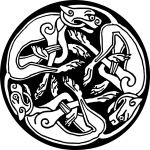
Coincidence or a...? Try Part 2.
"The task of the scholar of esoteric studies is not to prove that such an invisible 'tradition', hidden behind the veil of historic events, did or did not exist; as such; before the Renaissance; rather, the task consists of trying to grasp and to describe the different facets of the emergence of this idea as it appears in the imaginary and the discourses of the last centuries [and/or millenniums. This readers input]. Quote by A. Faivre.
Analogy of same..."At the beginning [of time] Meaning already was, and god had meaning with him, and god was meaning." Understanding that universal framework gives that alternative statement a certain logic. A credible one. As it does in the following statement...

An ''opening'' of something?
"When a man finds no Meaning in anything he has at the same time no feeling of god. Meaninglessness is a terrible illness. It has to be got over. It is the same as godlessness, because if you say there is no god, you are saying that there is no Meaning in things. But if you think there is Meaning, you believe in God. Meaning is god. You cannot say that you do not believe in god but believe that there is Meaning in things. The two are the same, in that one cannot be without the other. God is Meaning. If you dislike the word god, then say Meaning instead. The word God shuts some peoples minds. The word Meaning cannot. It opens the mind." [Both extracts taken from the book 'The Mark'].
Proving the viability of working through those first impressions. Before those bigger questions are asked.
Try ''cup''.
'Mans Search for Meaning' / Viktor Frankl.
"Everyone has an internal thought process: that silent other self who speaks to you; the one you debate with." [First sentence; first paragraph; first page of the book by Q. S. Lam].
And/or..."You may care to dwell upon the parable which indicates that 'God' is not to be found in the strong wind nor the earthquake, nor in the fire but only within the silence of the still small voice." [From the book 'The Silent Road'. Mentioned elsewhere]. Try ''child''.
A {working} example: "Geoffrey says, that when the Trojans came to Britain the Island was then called Albion {'white' link}, and was inhabited by none but a few 'giants'....Until the present age, few tales of giants, fairies, trolls, demons, and the like, were without some foundation in fact. Some no doubt were due to purely natural phenomena, like the giants 'footprints', which I have mentioned on South Uist {'N/W'?}. The Gruagach, that grim giantess who appears on a misty hillside and 'lures' young men {'child' link} to their doom {death/rebirth, i.e.,in the 'spiritual' sense of the 'word'} - could be no more than the Brocken Spectra. However, she was also a goddess, with cup - marked stones named after her." [Page 20 'GogMagog' / T. Lethbridge].
